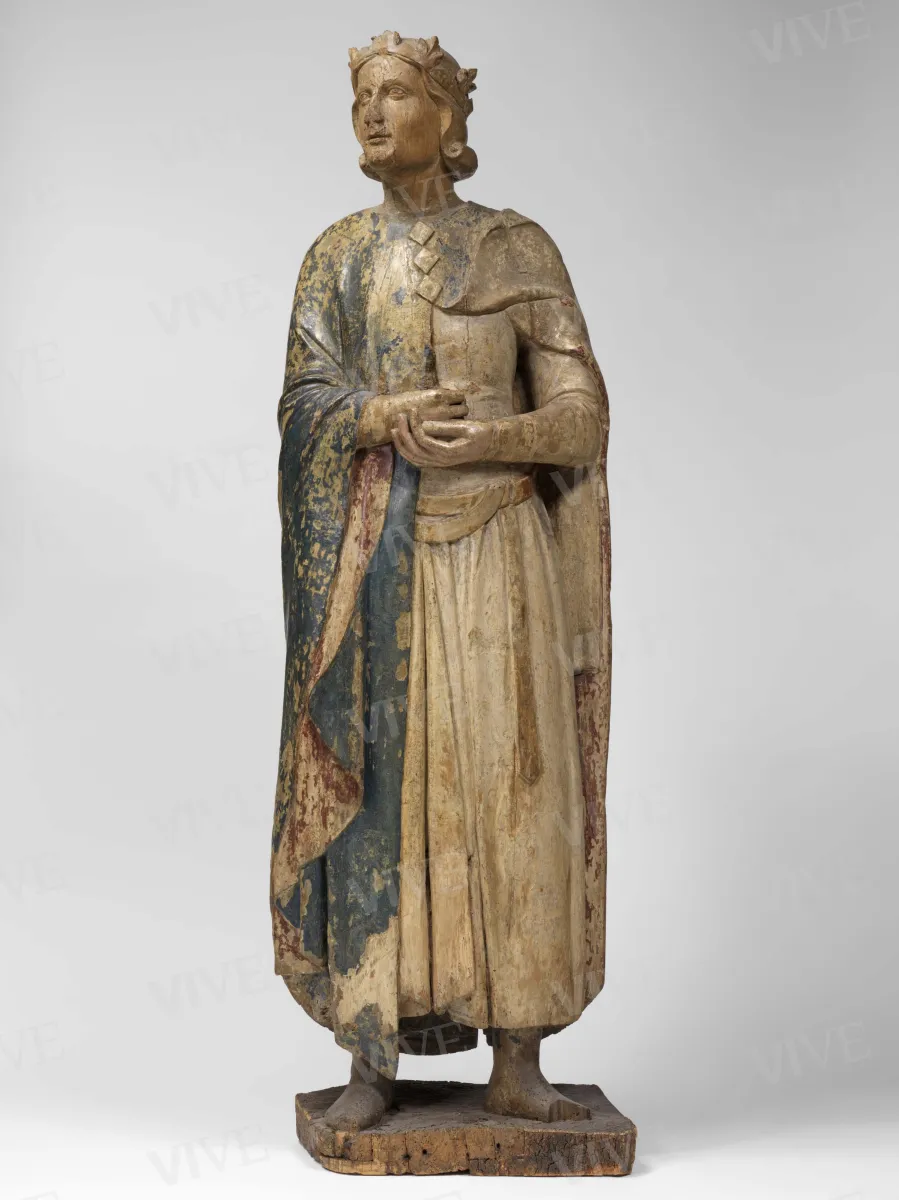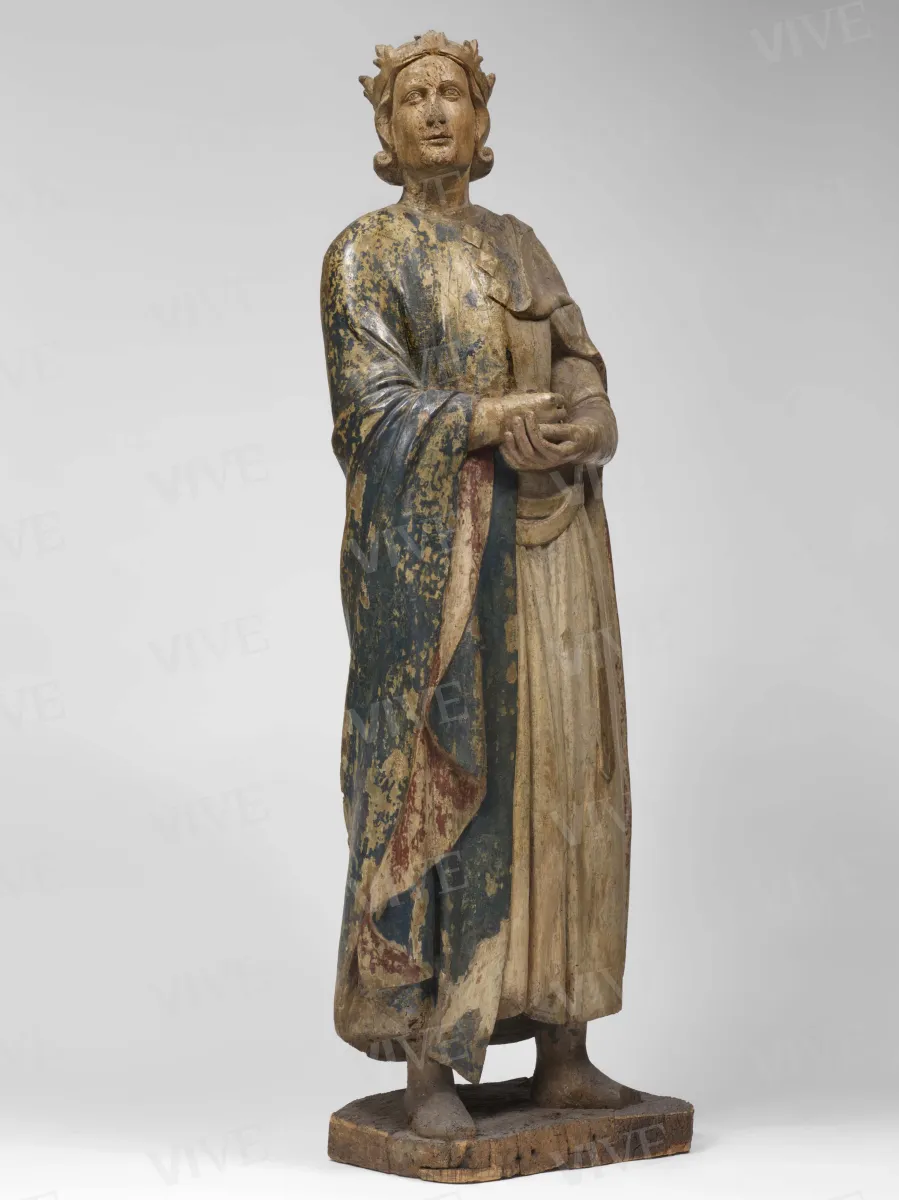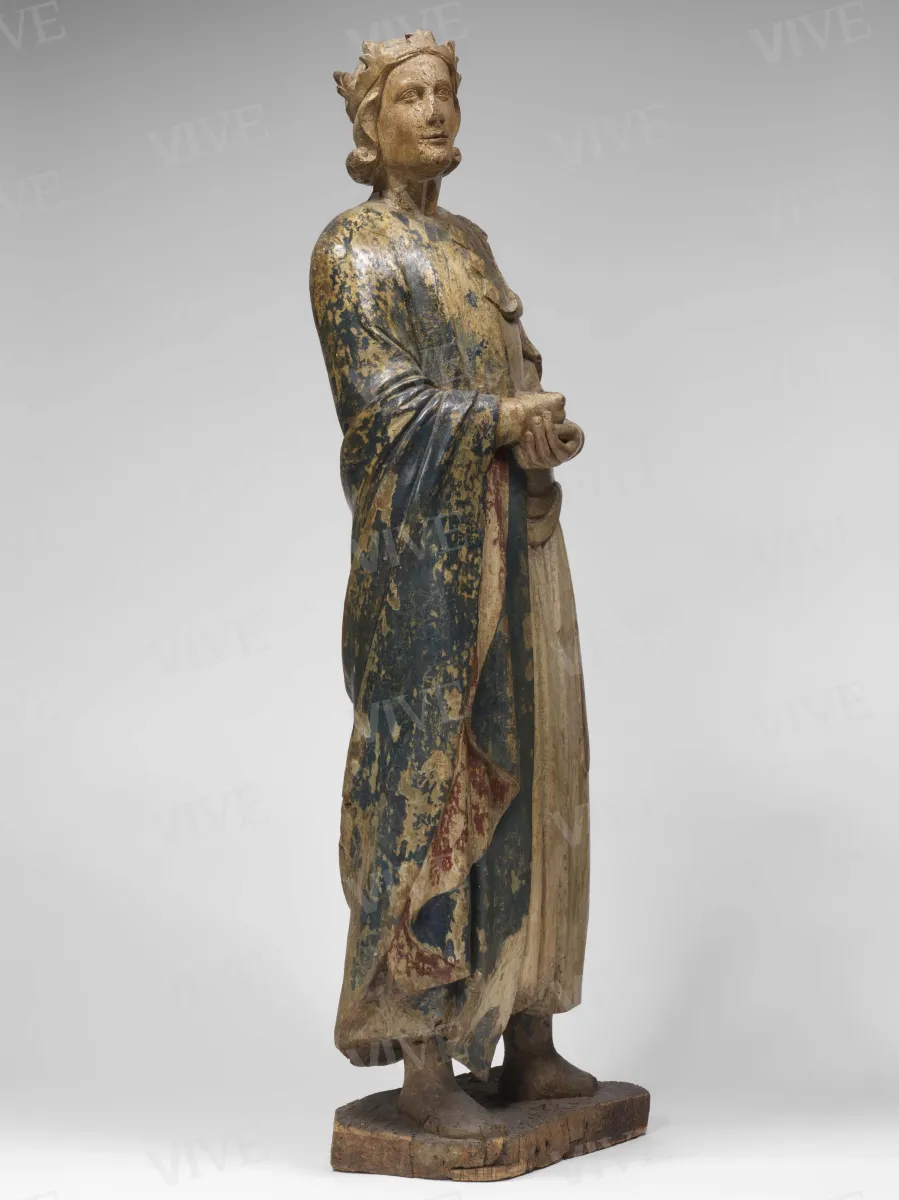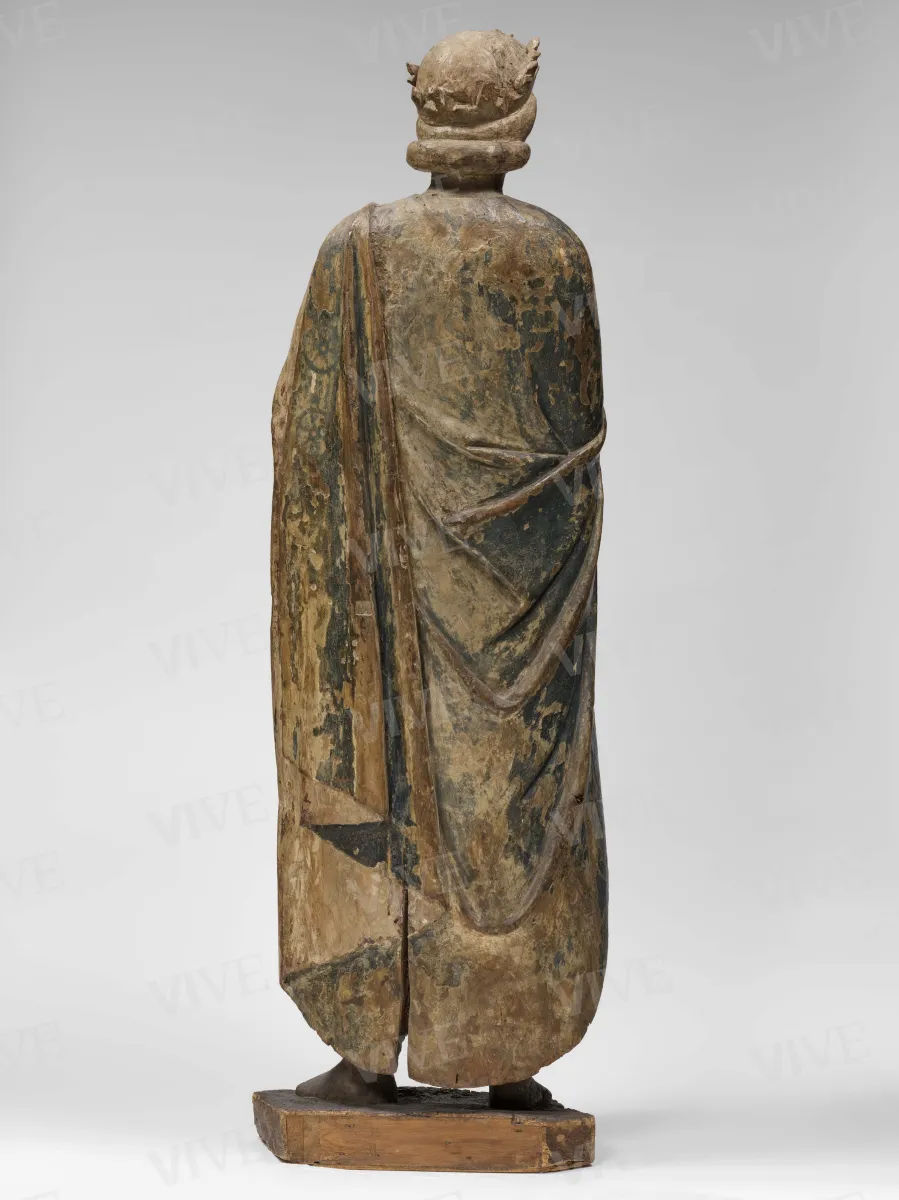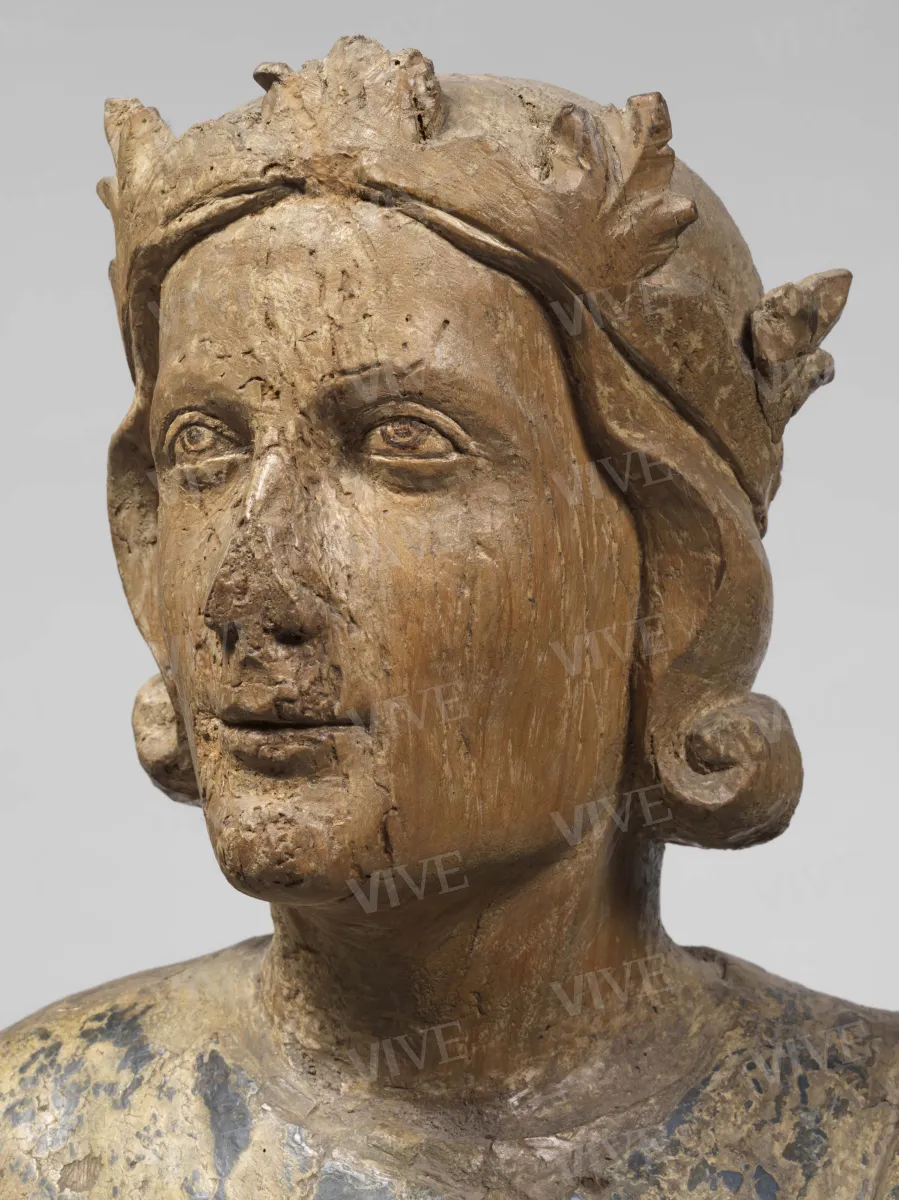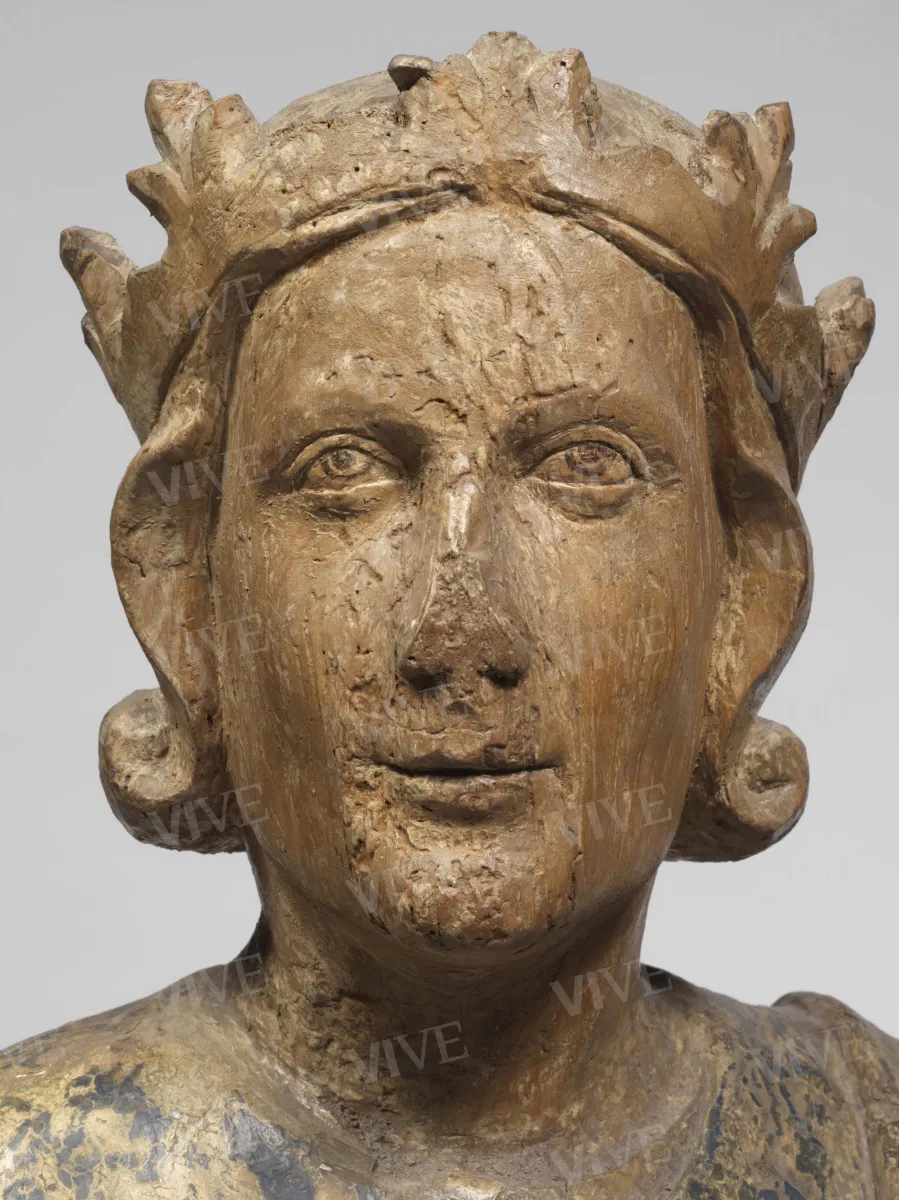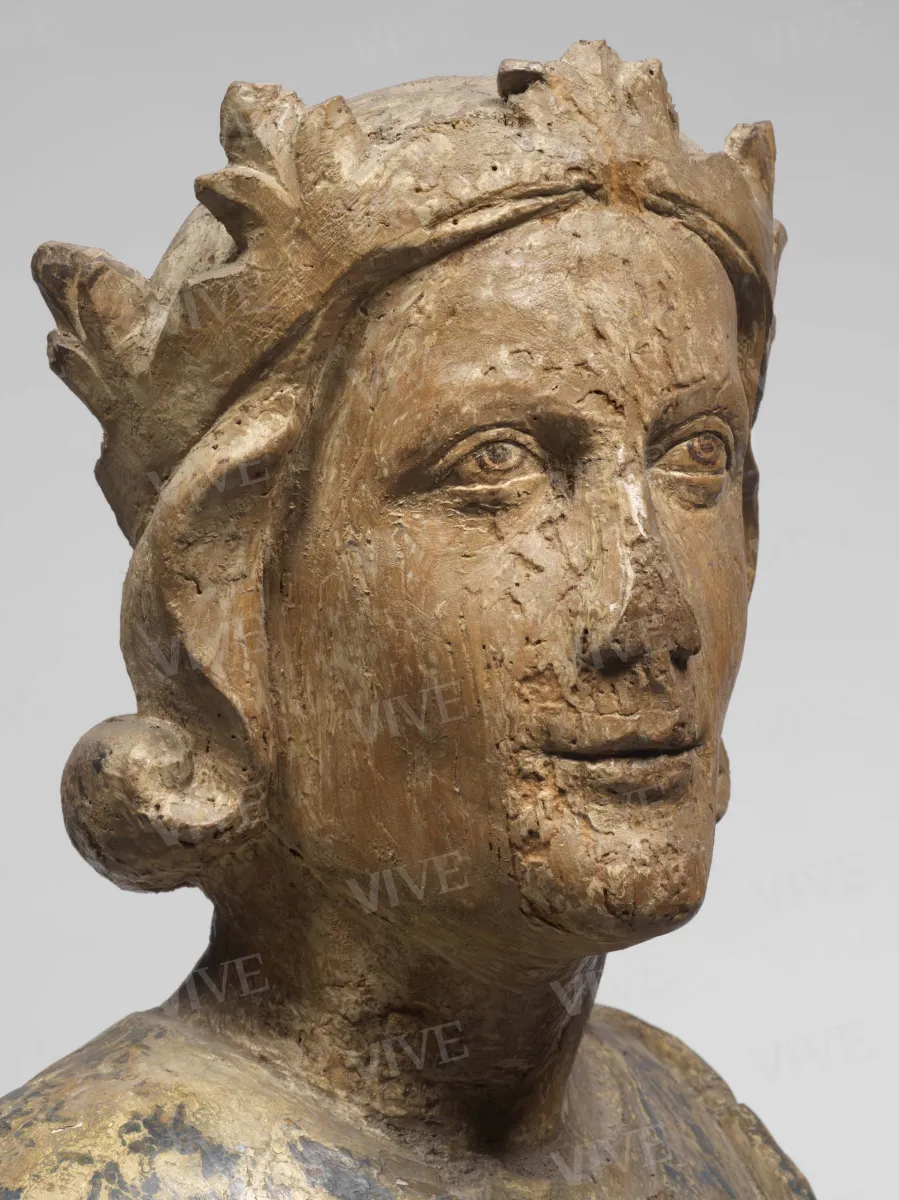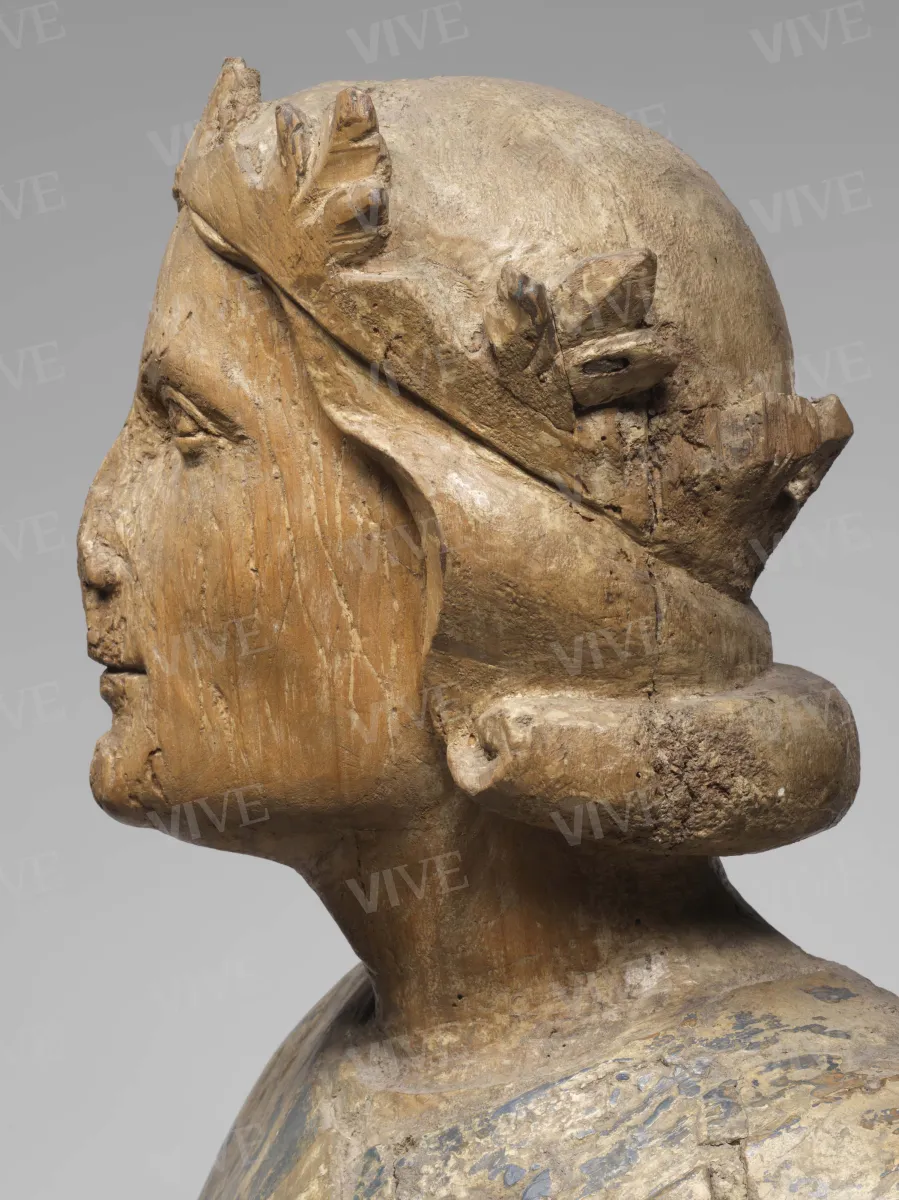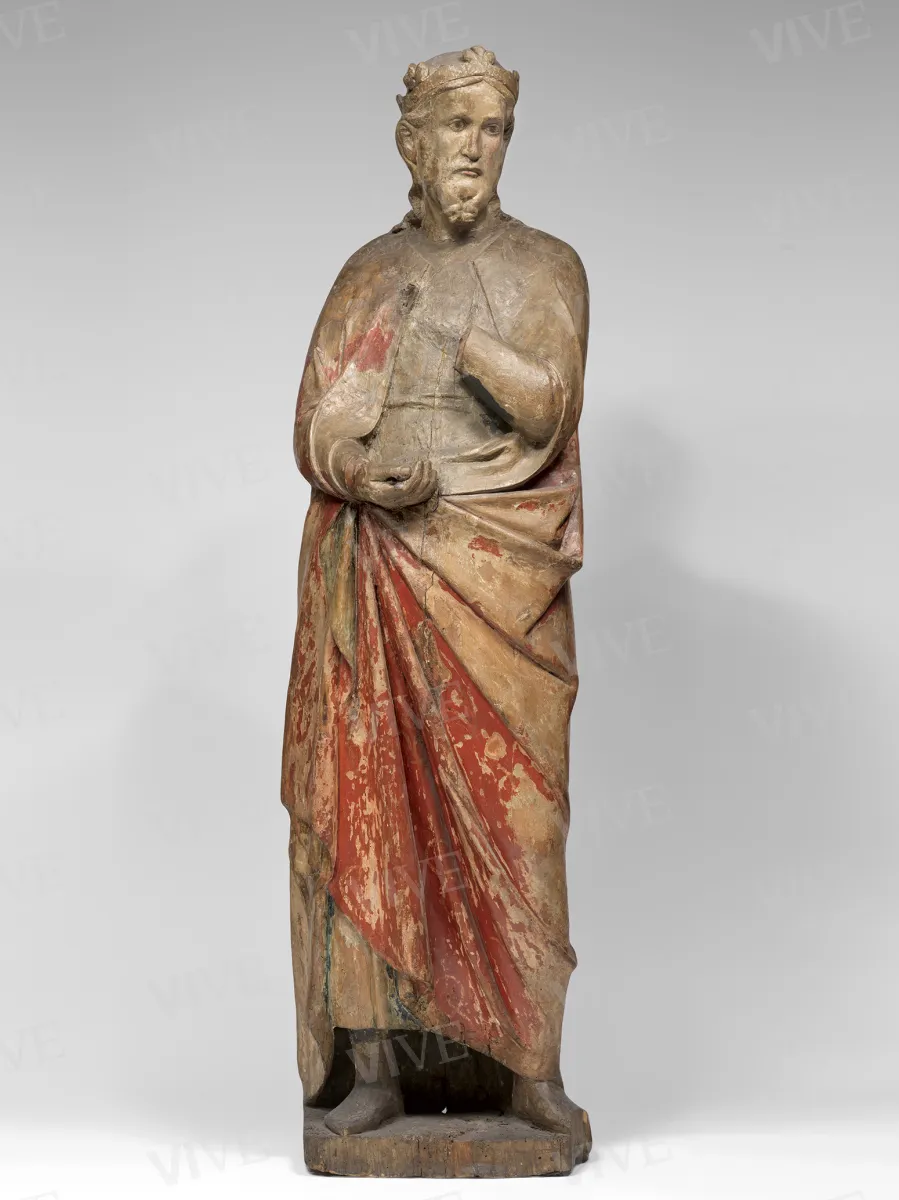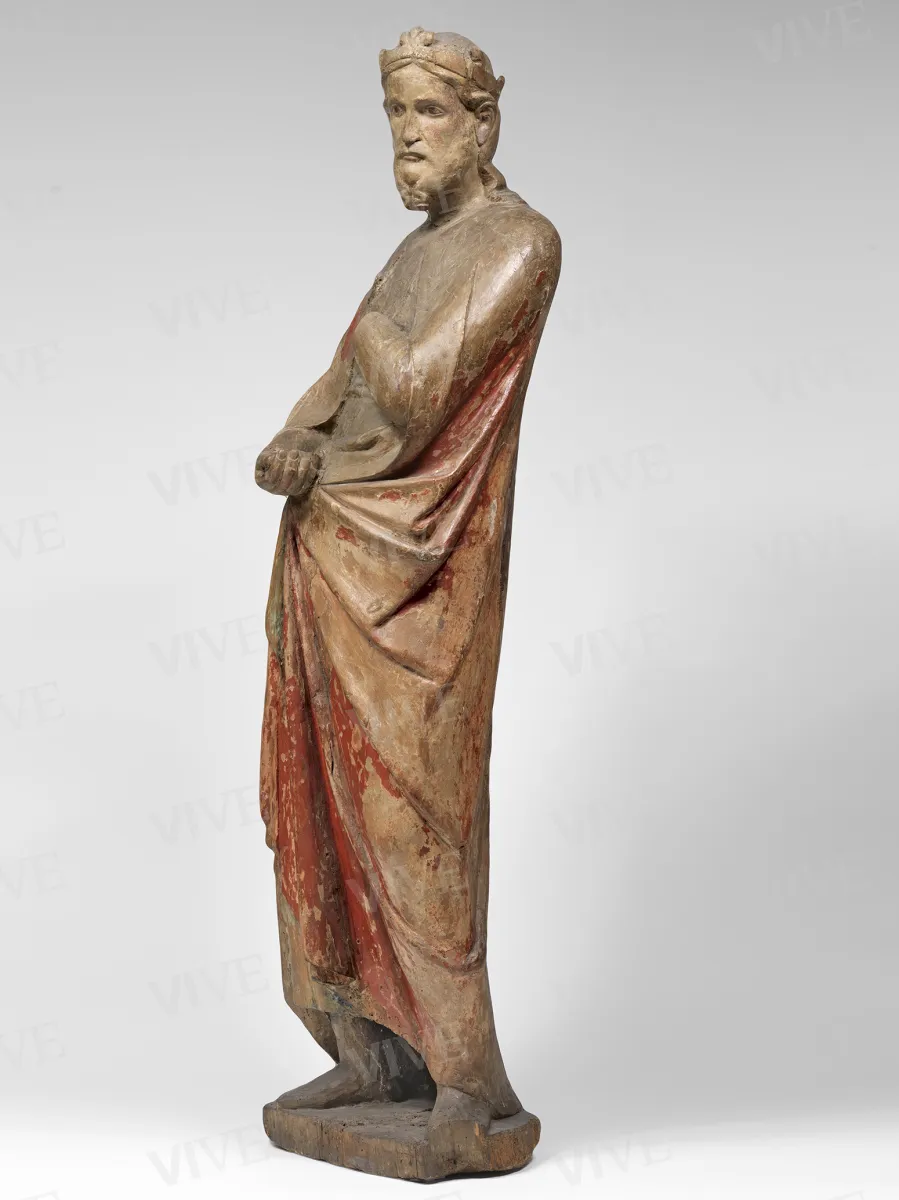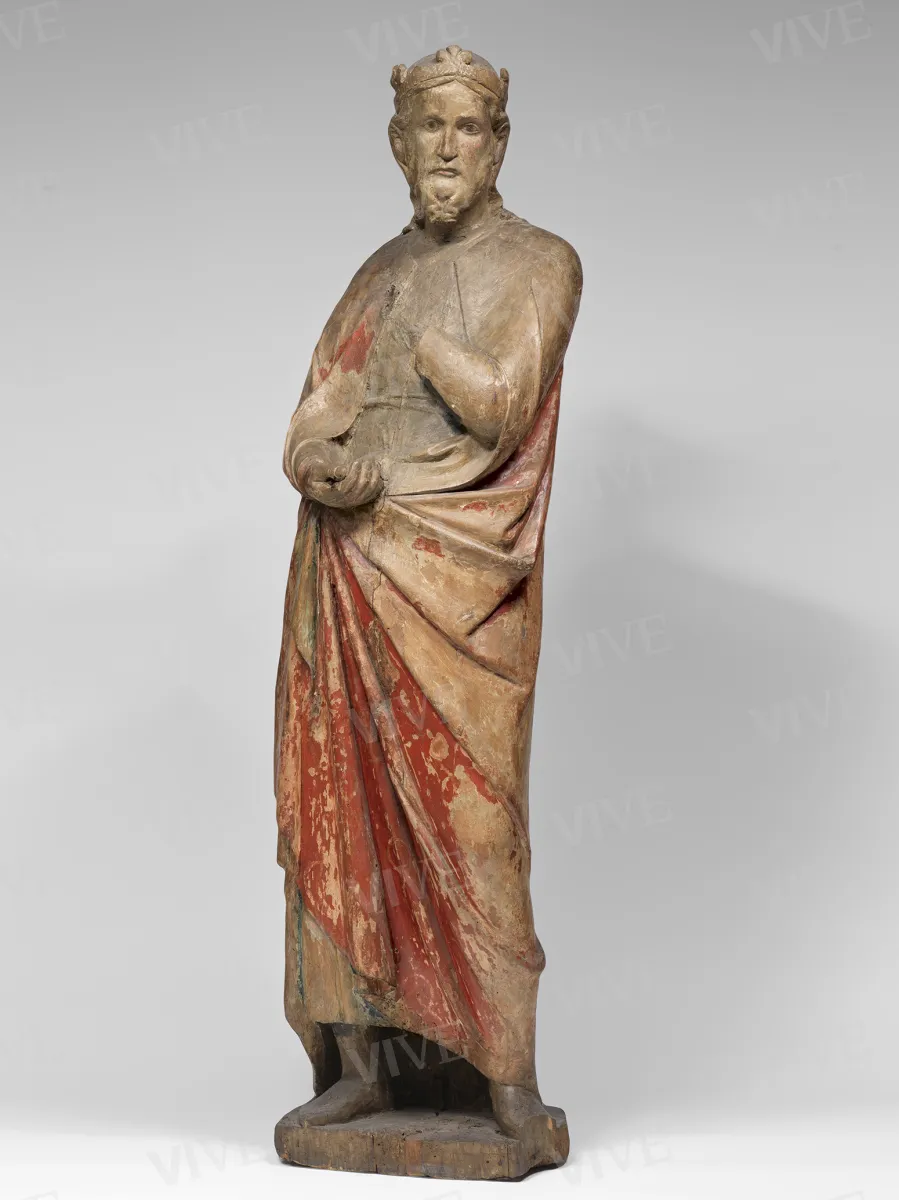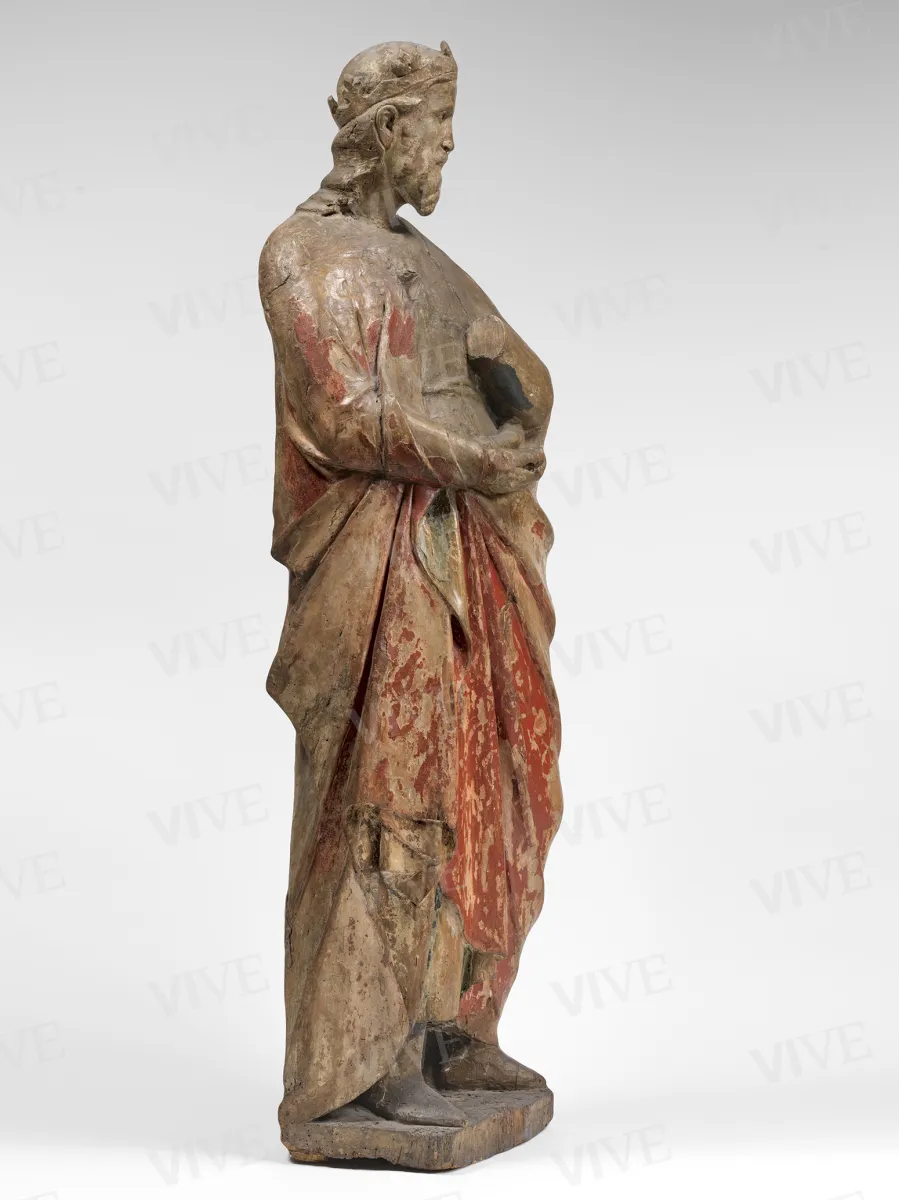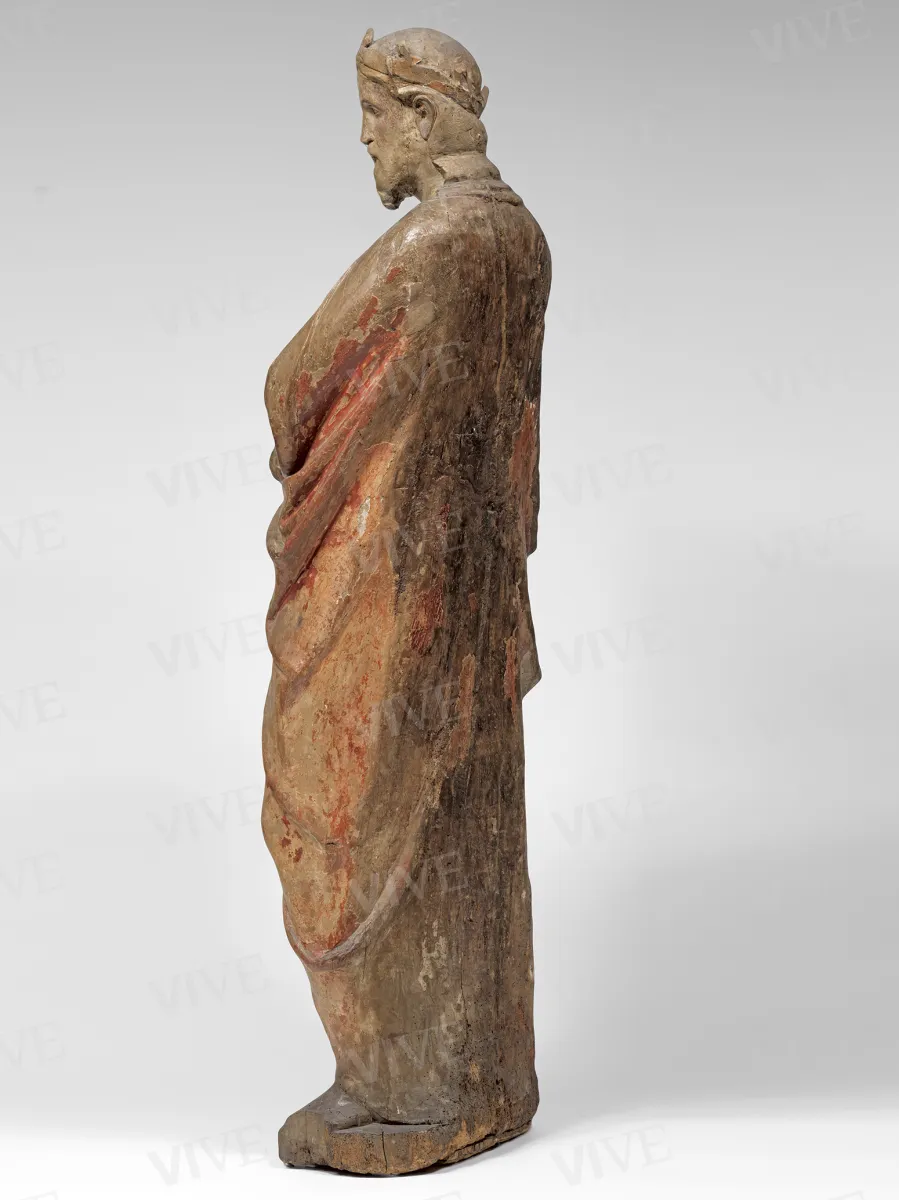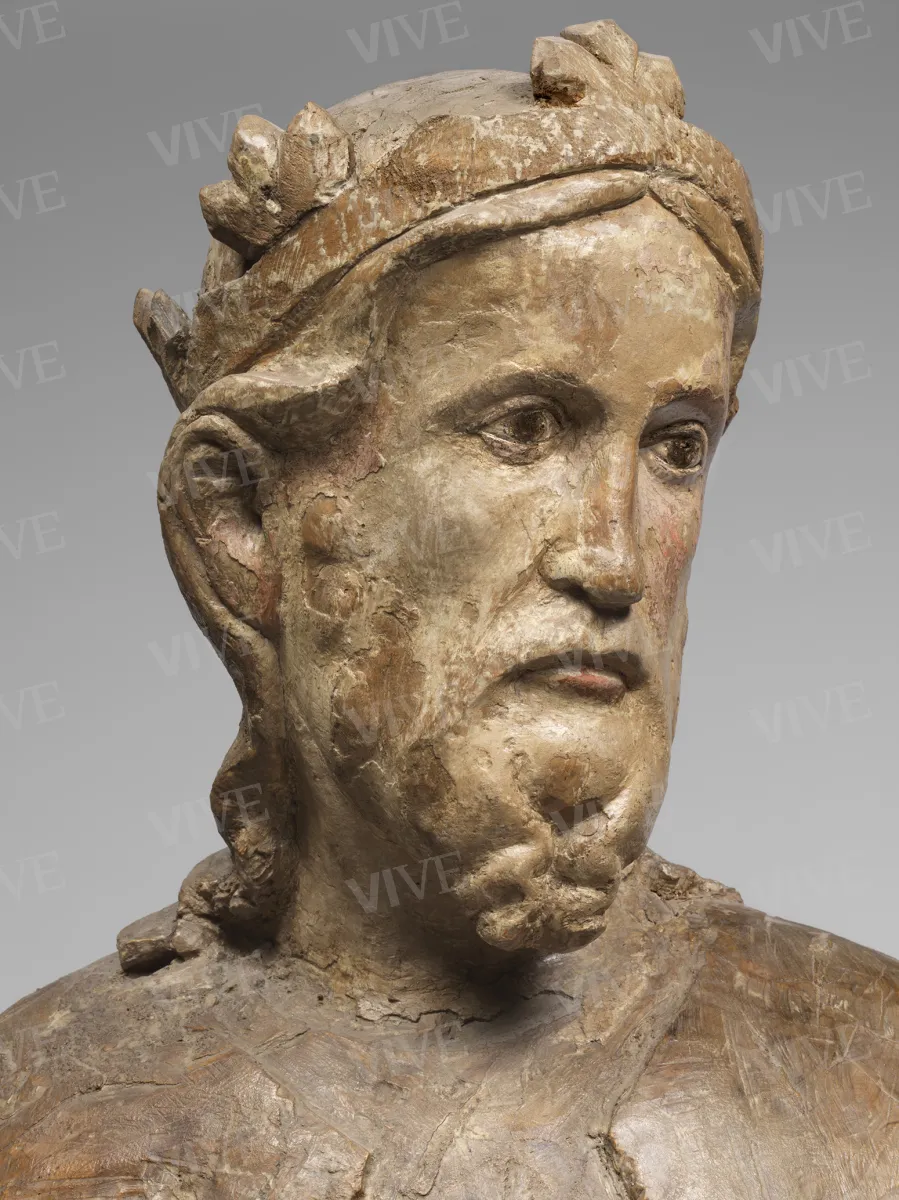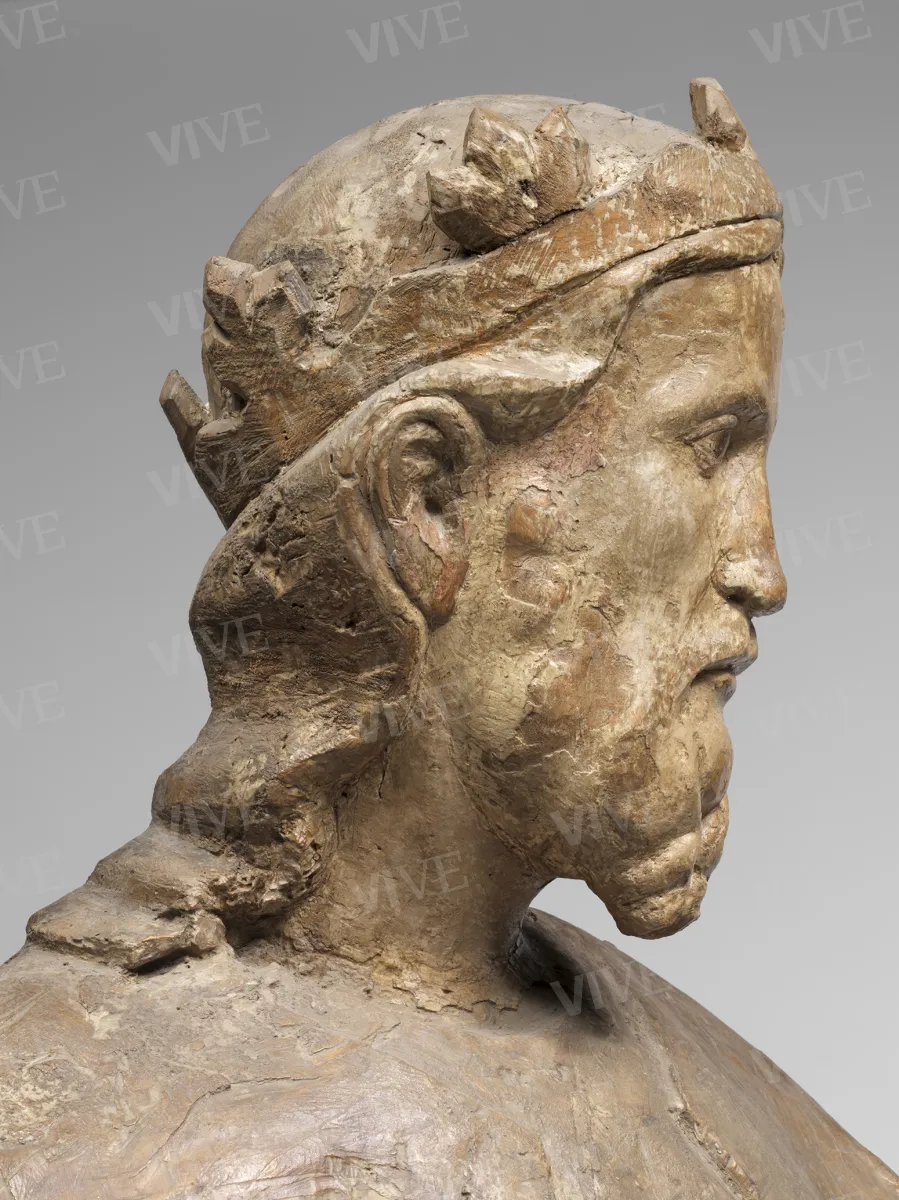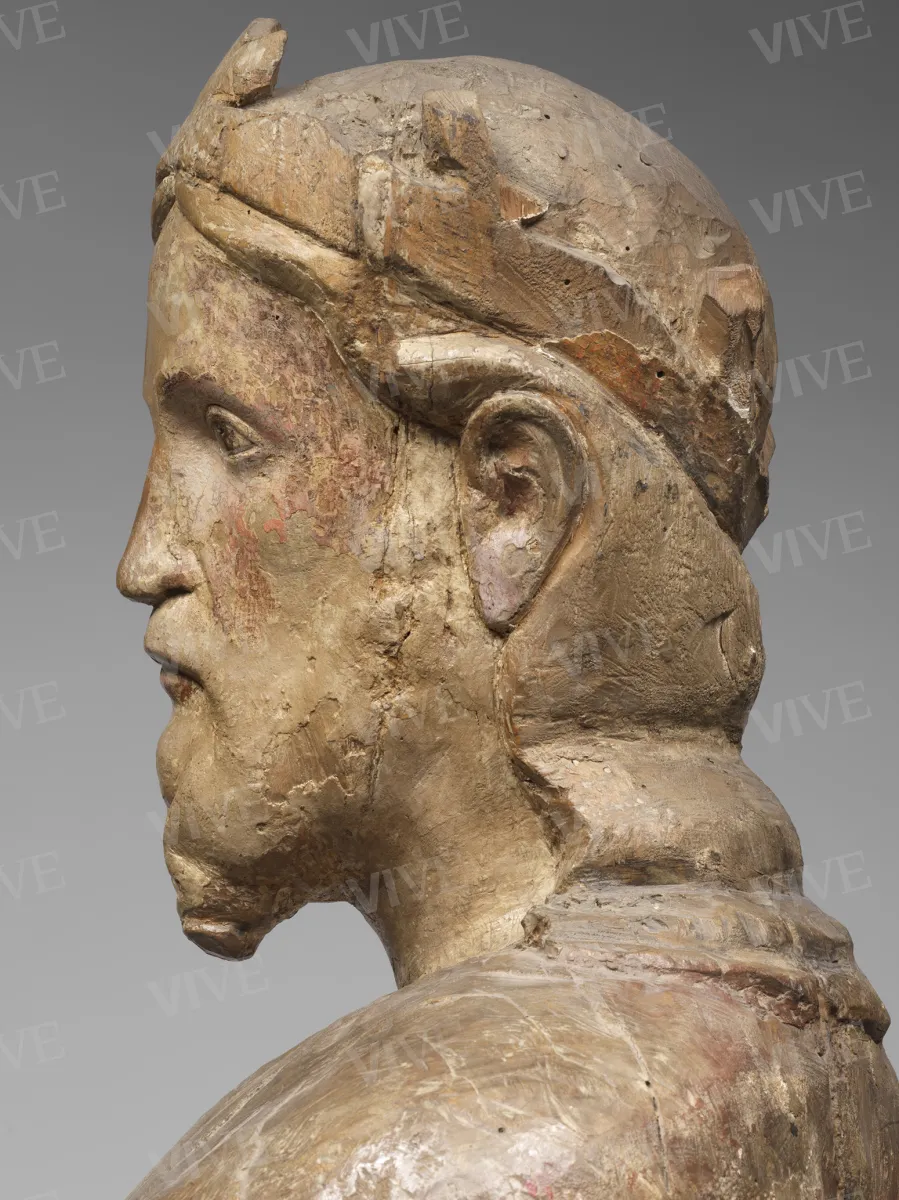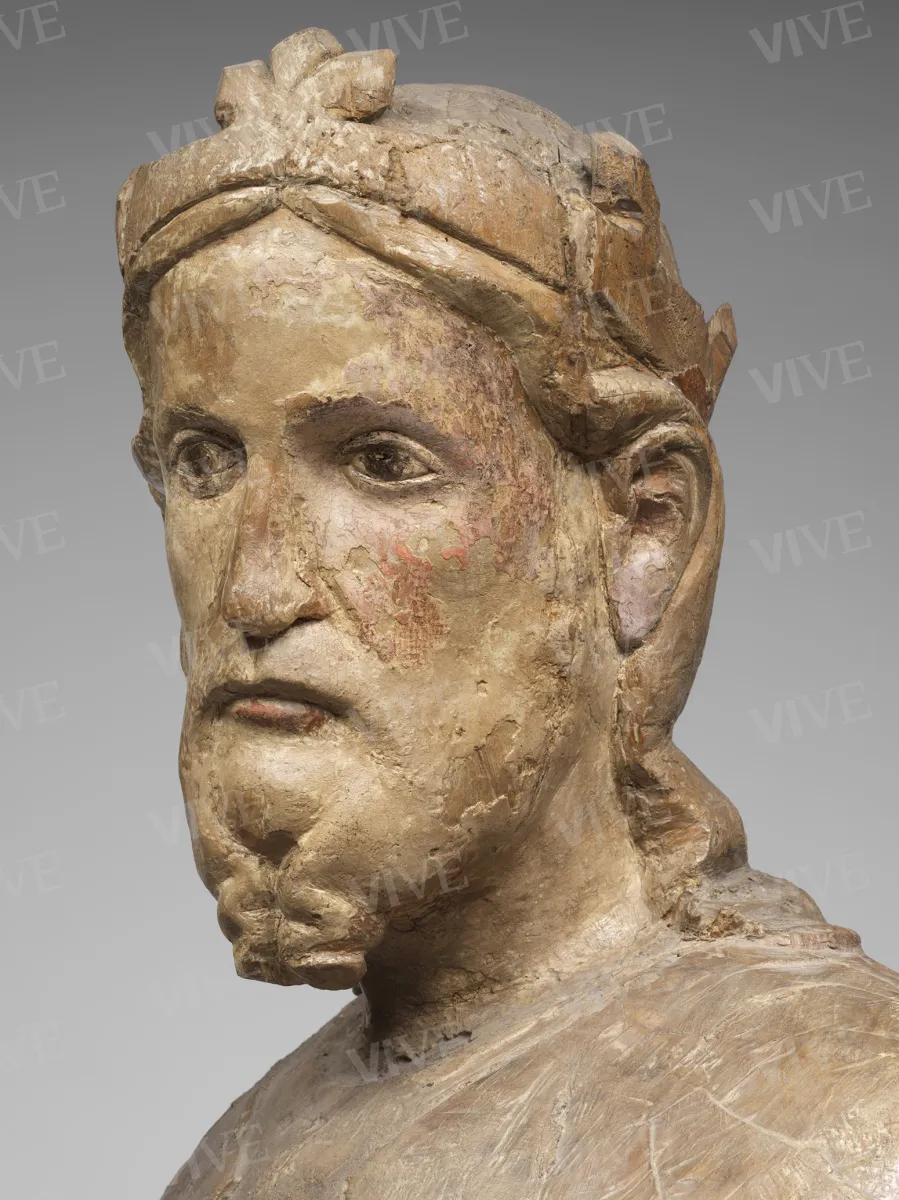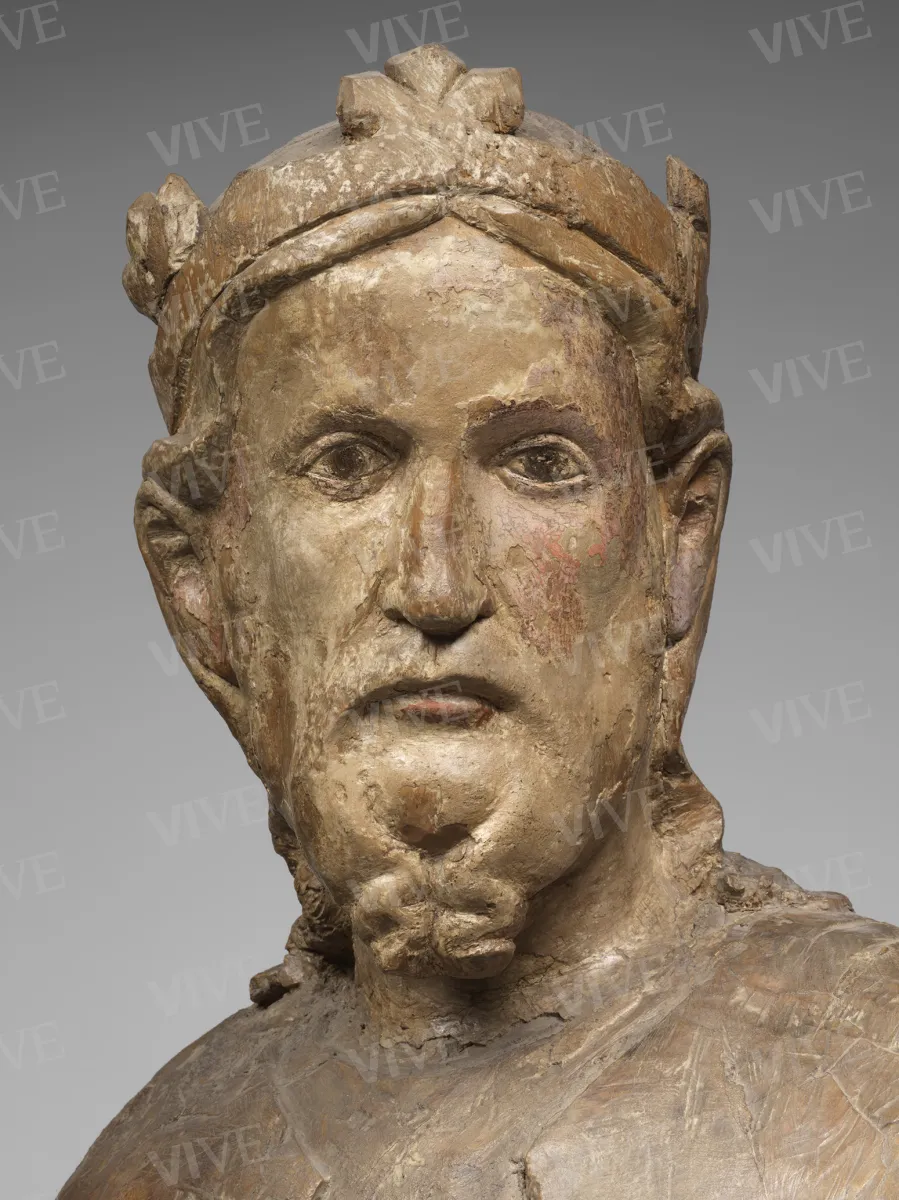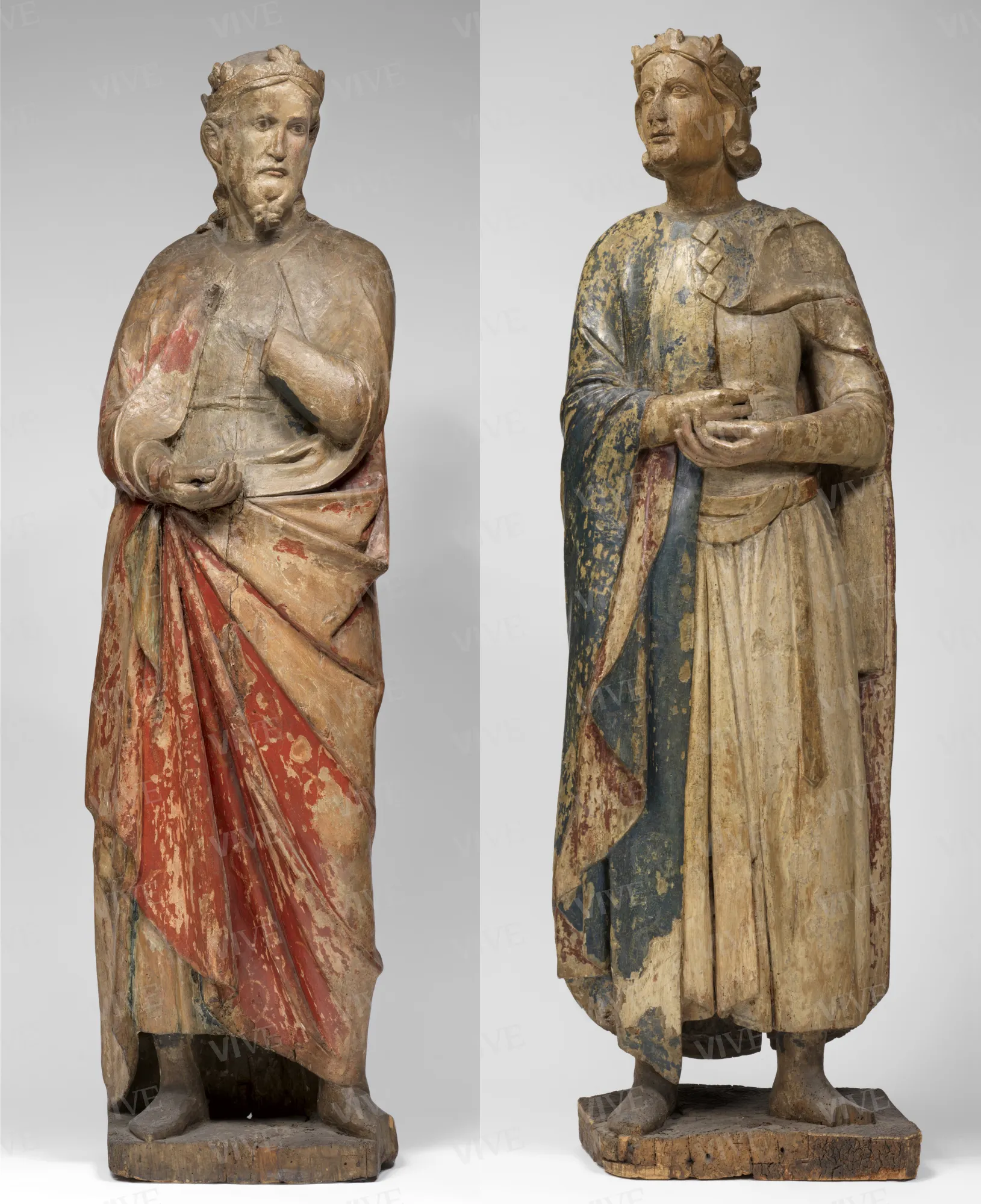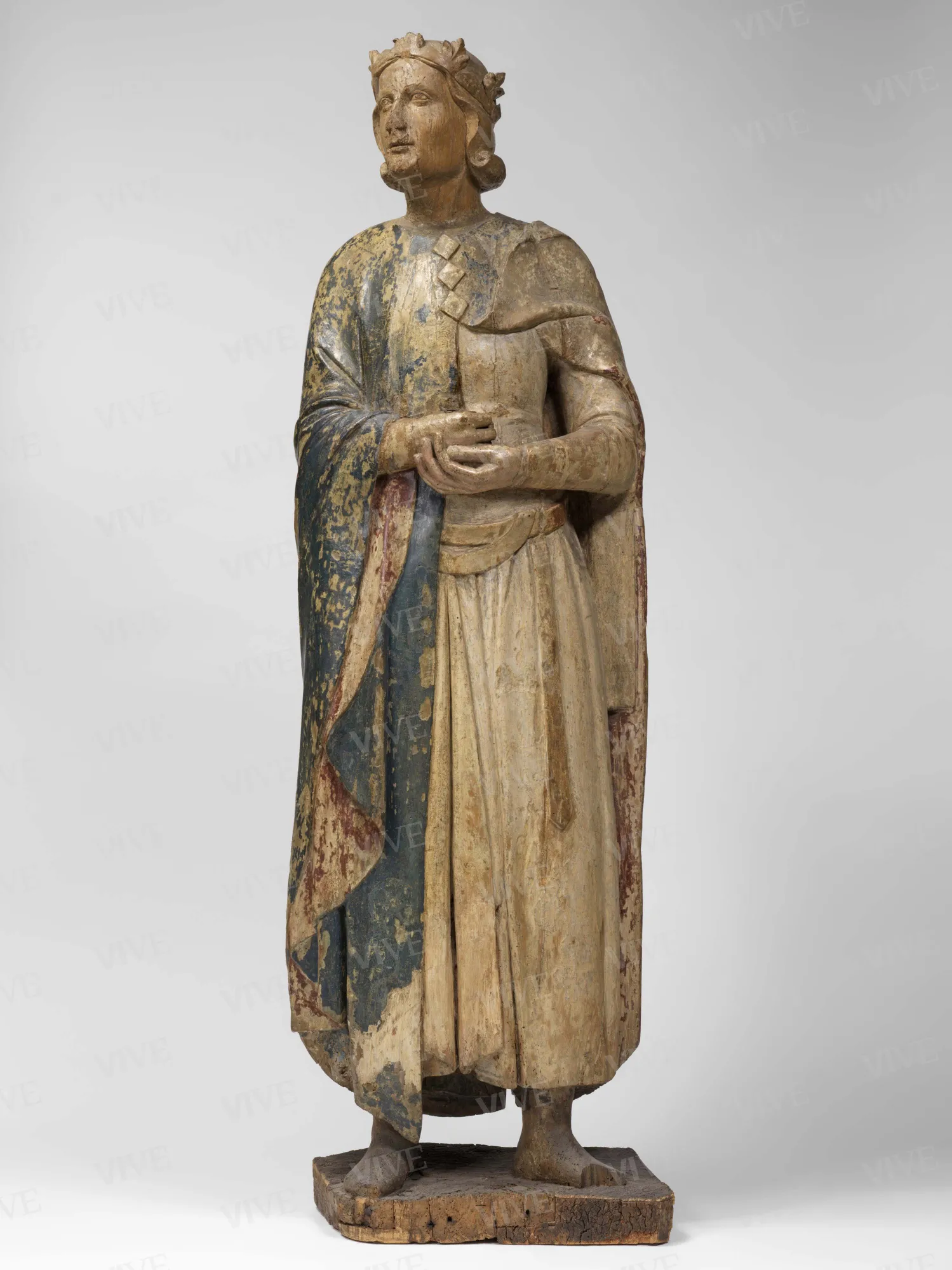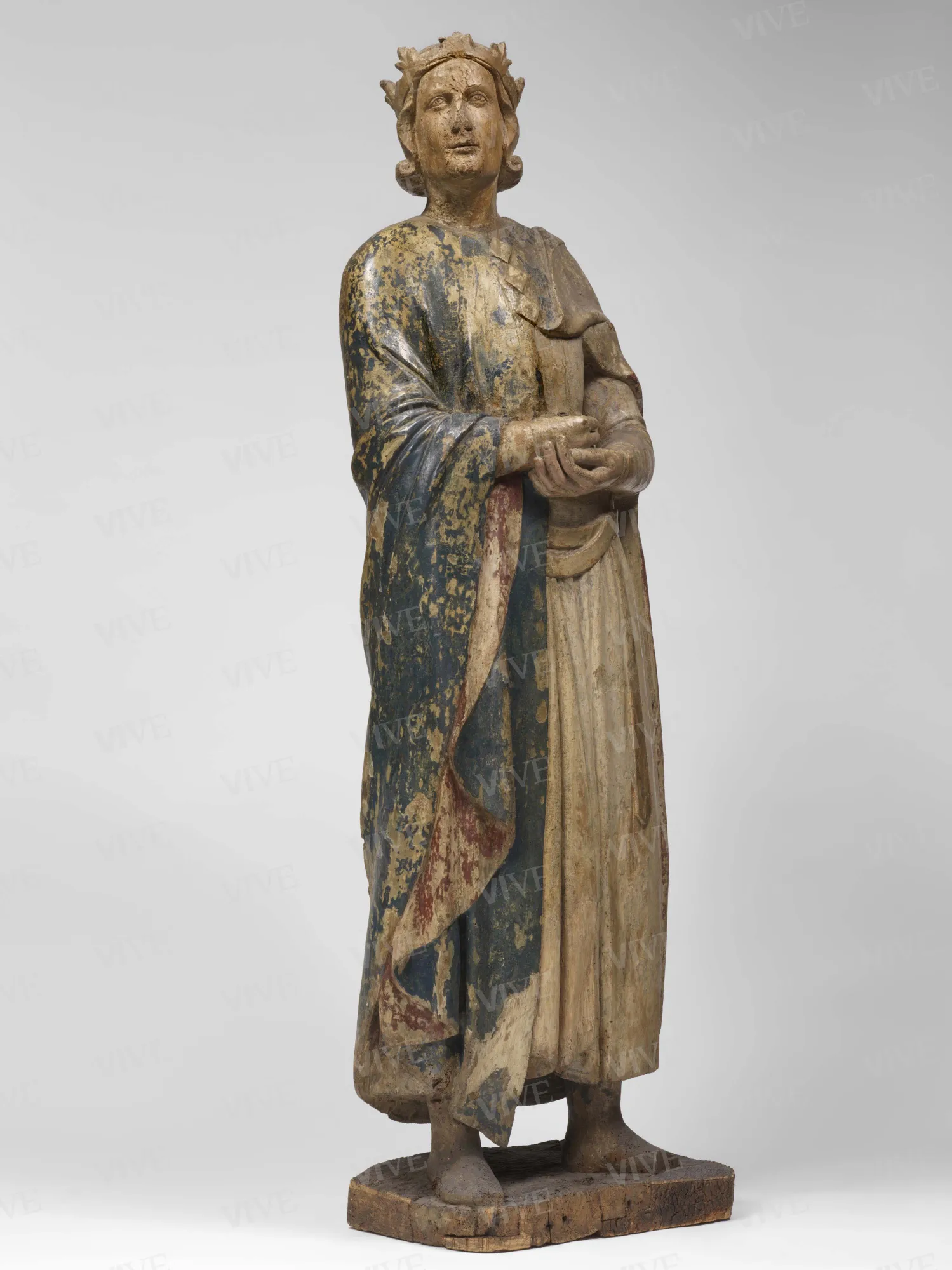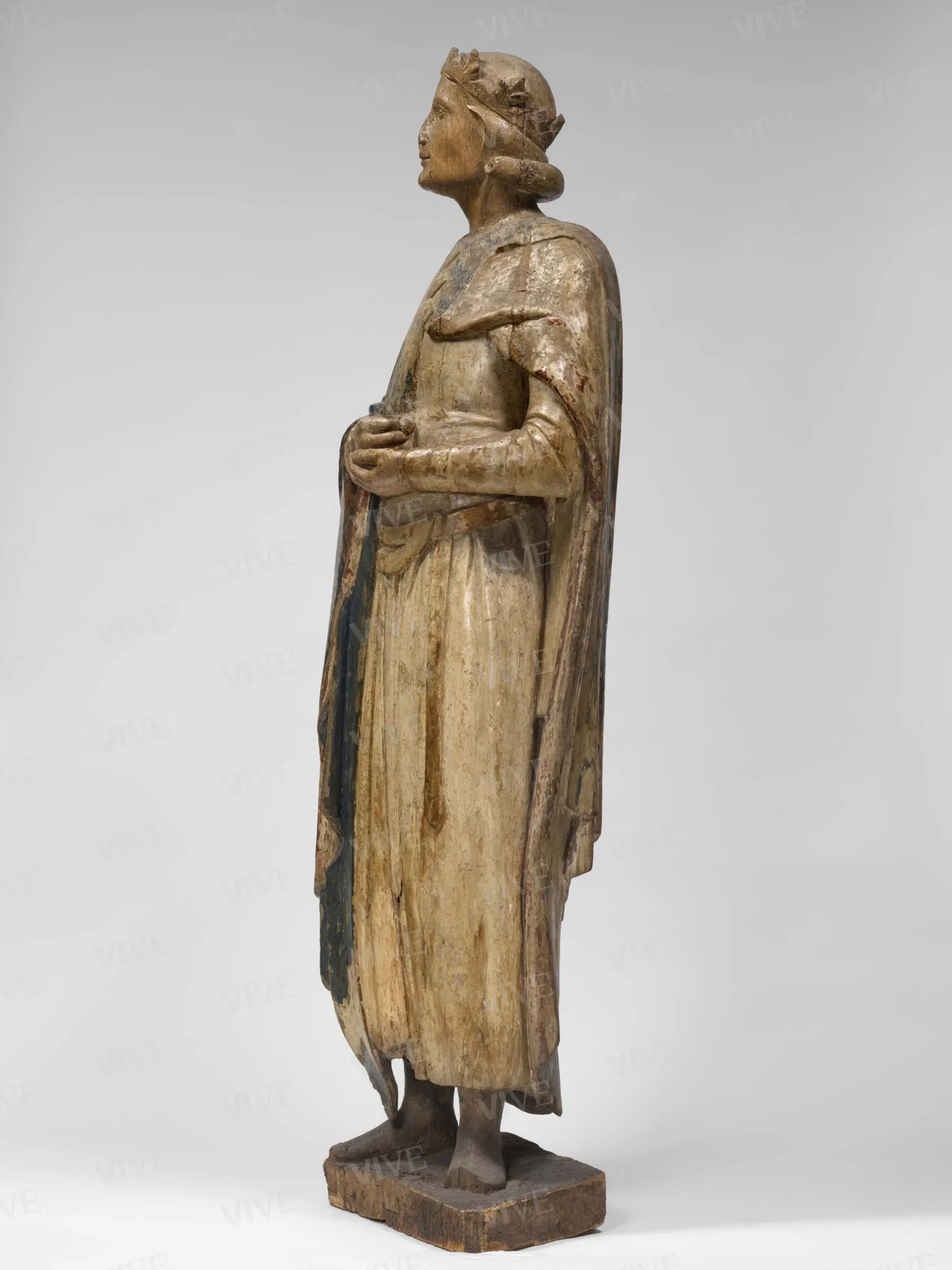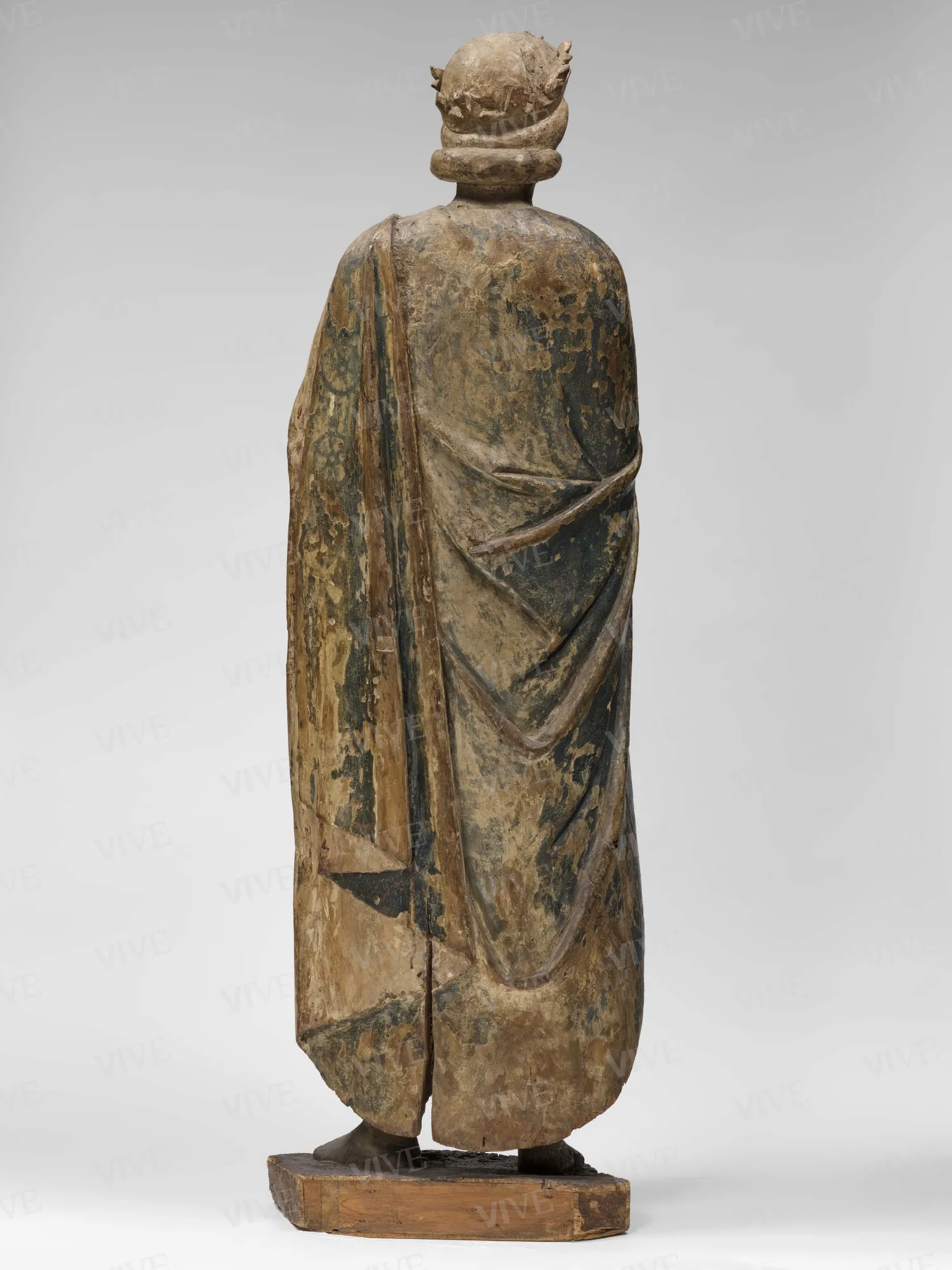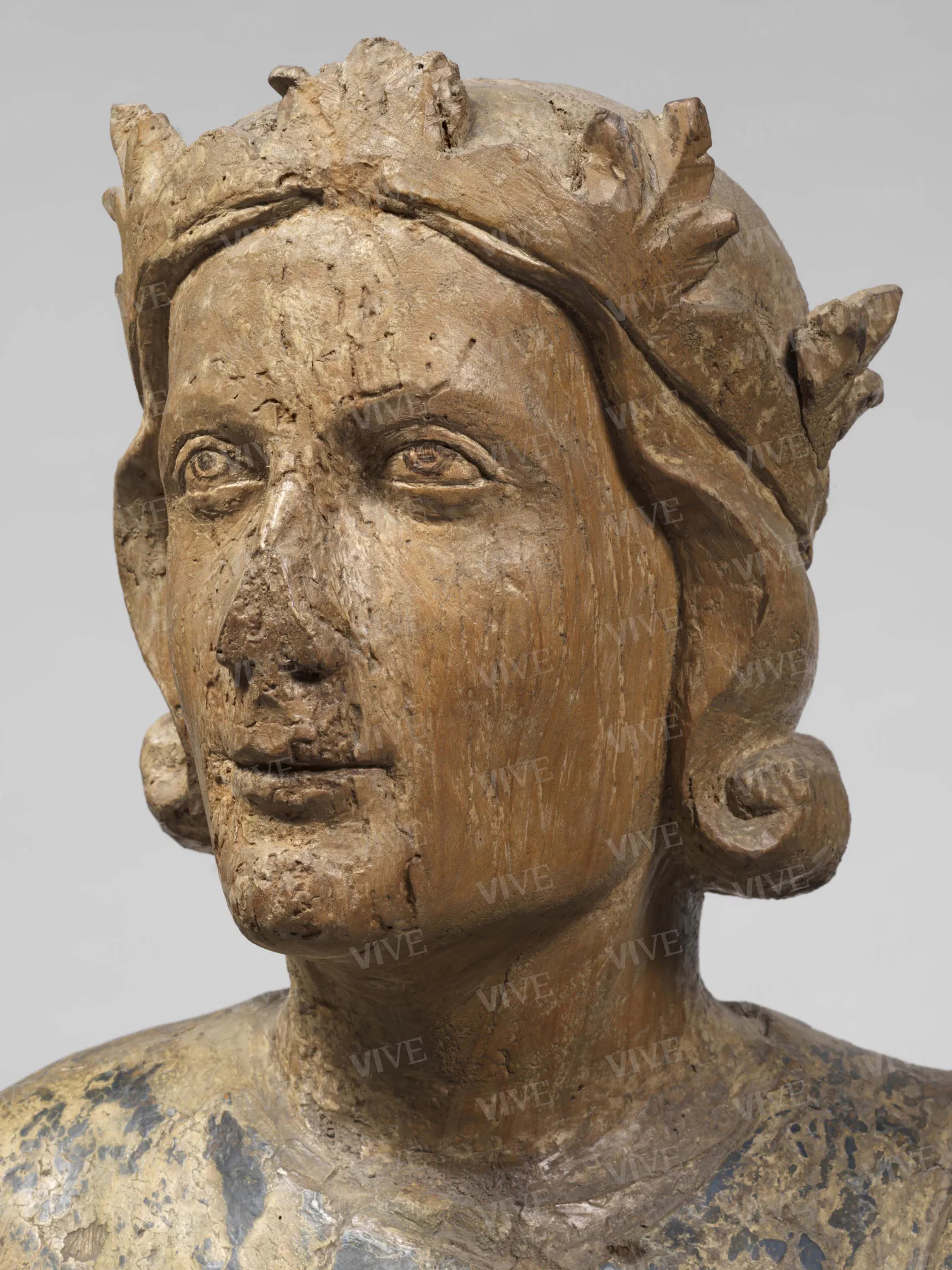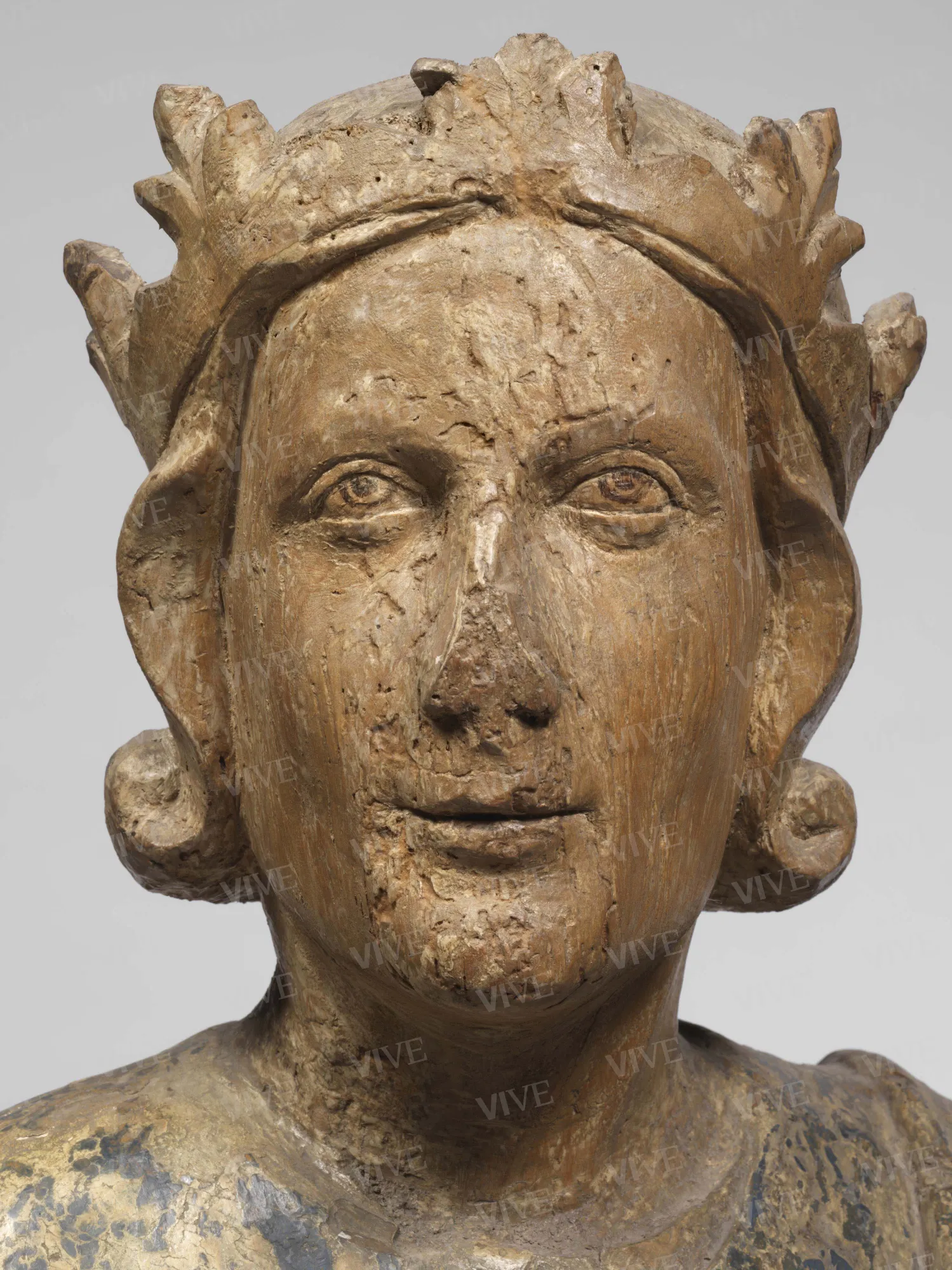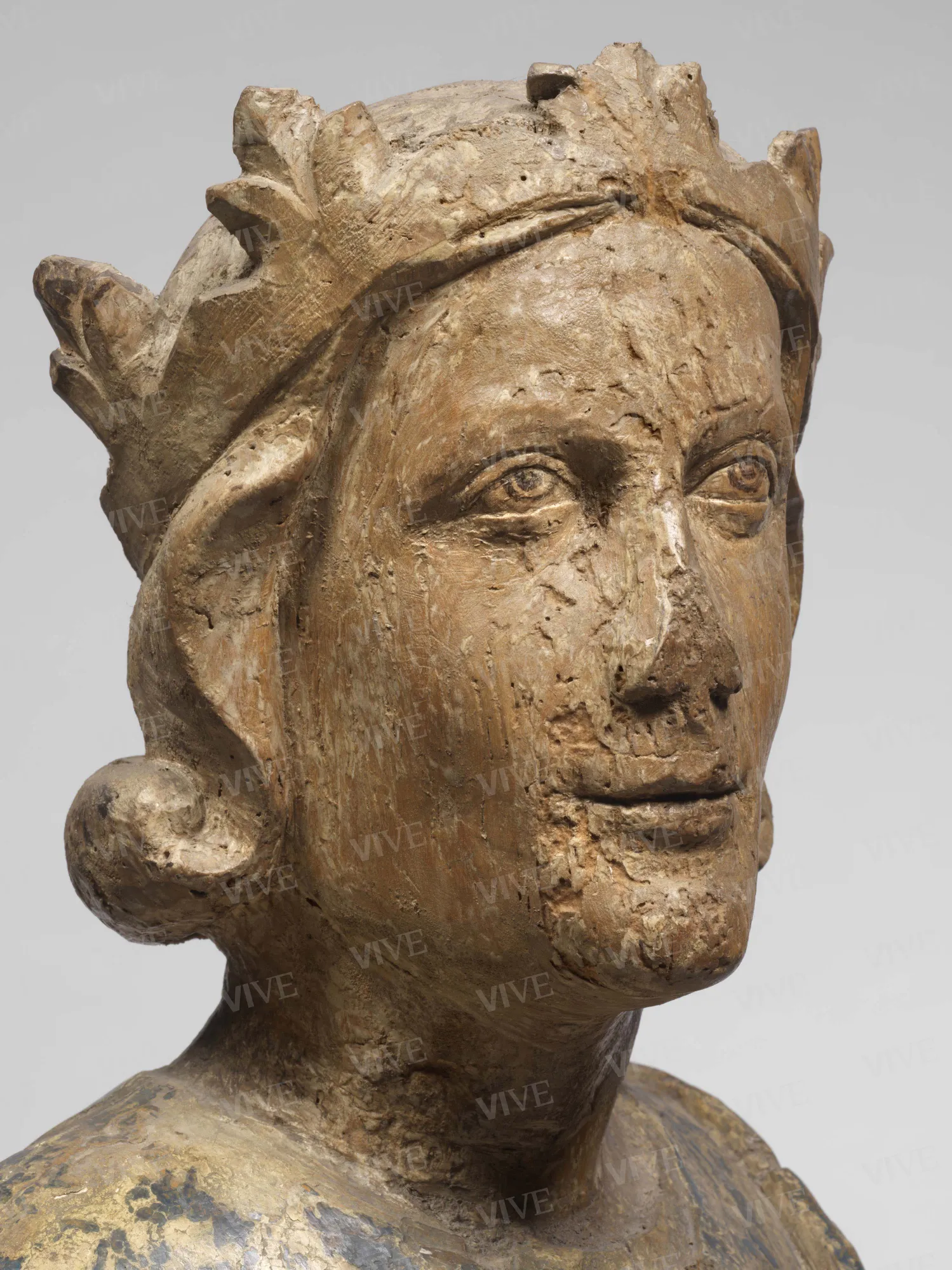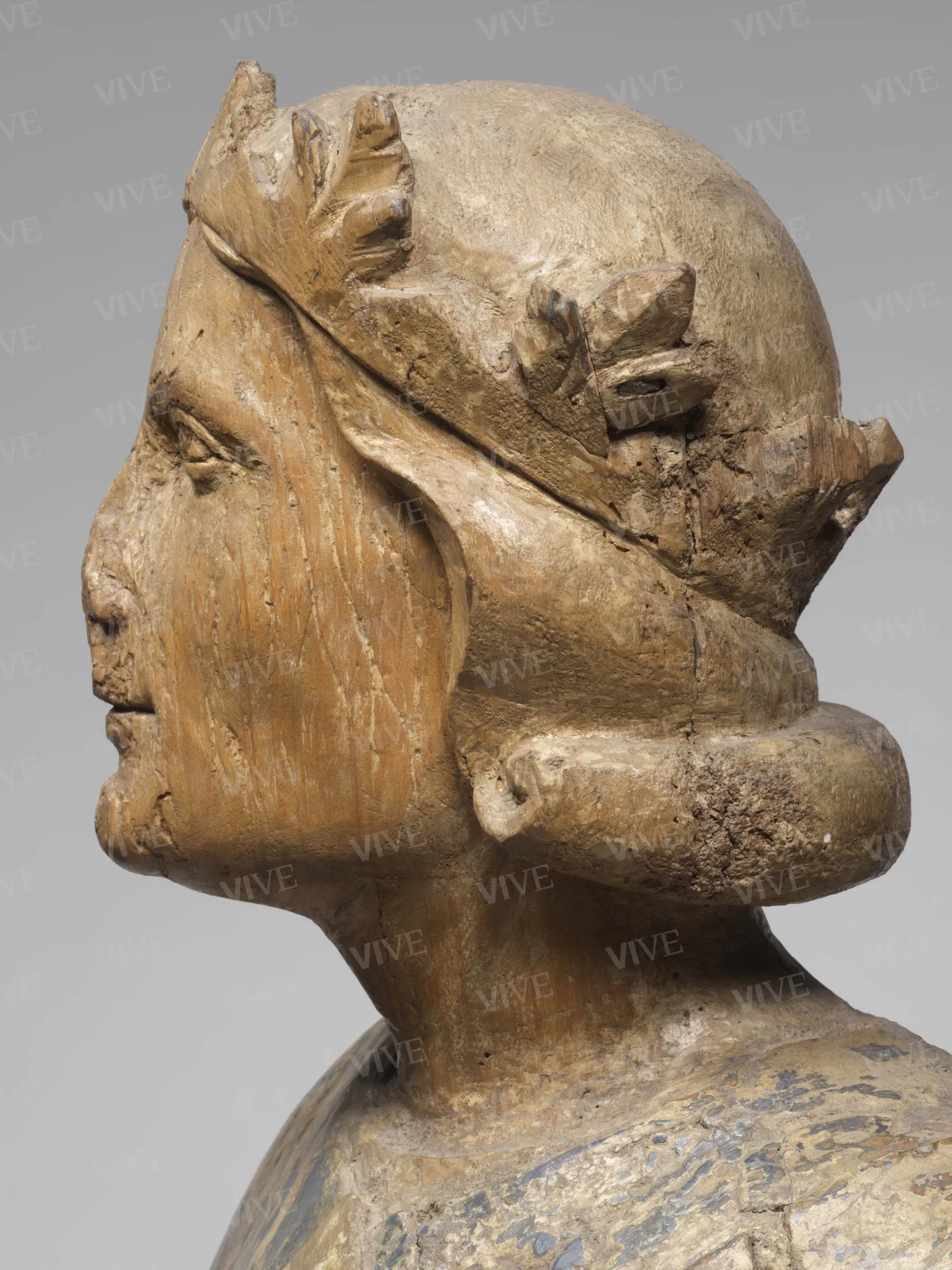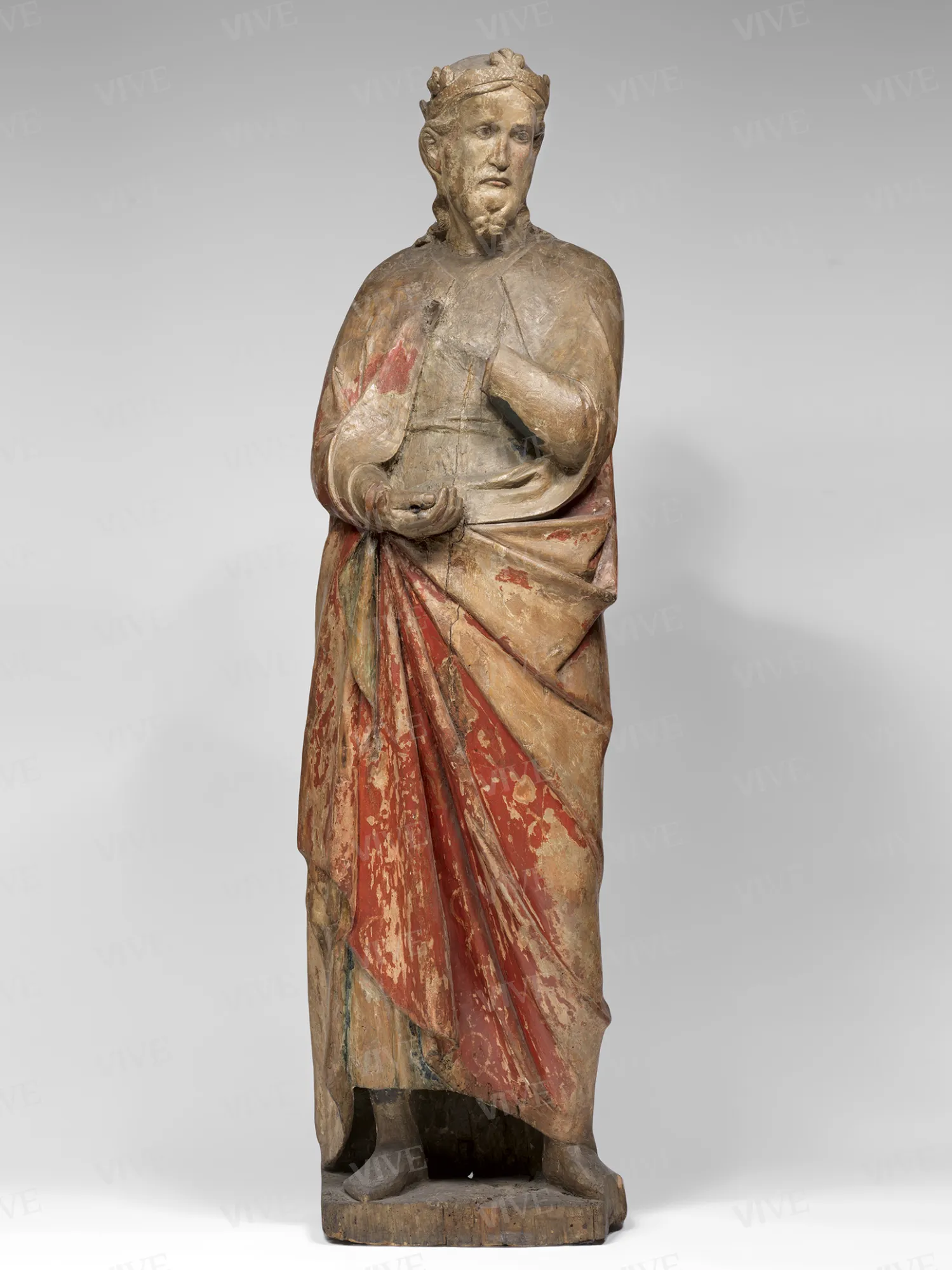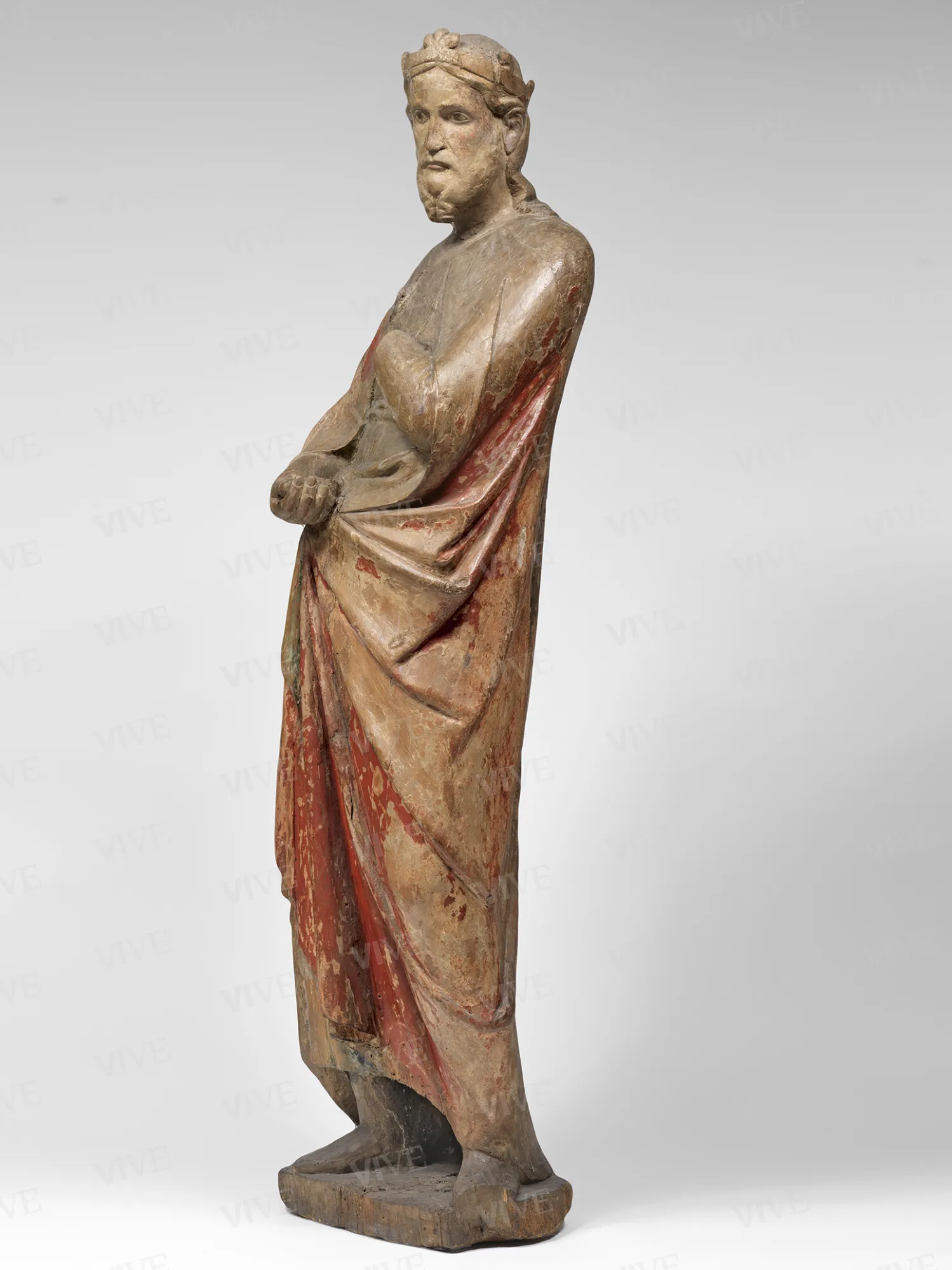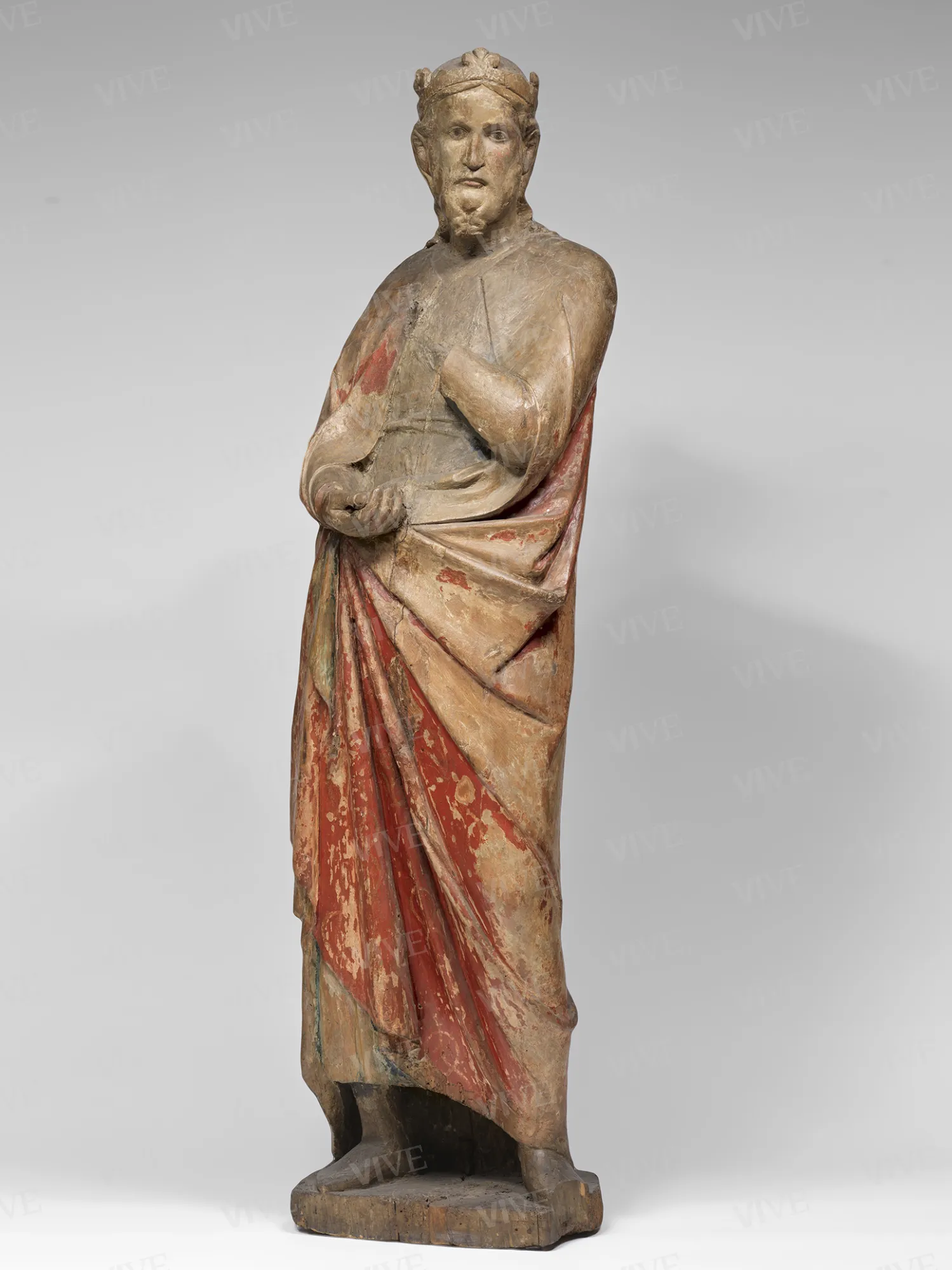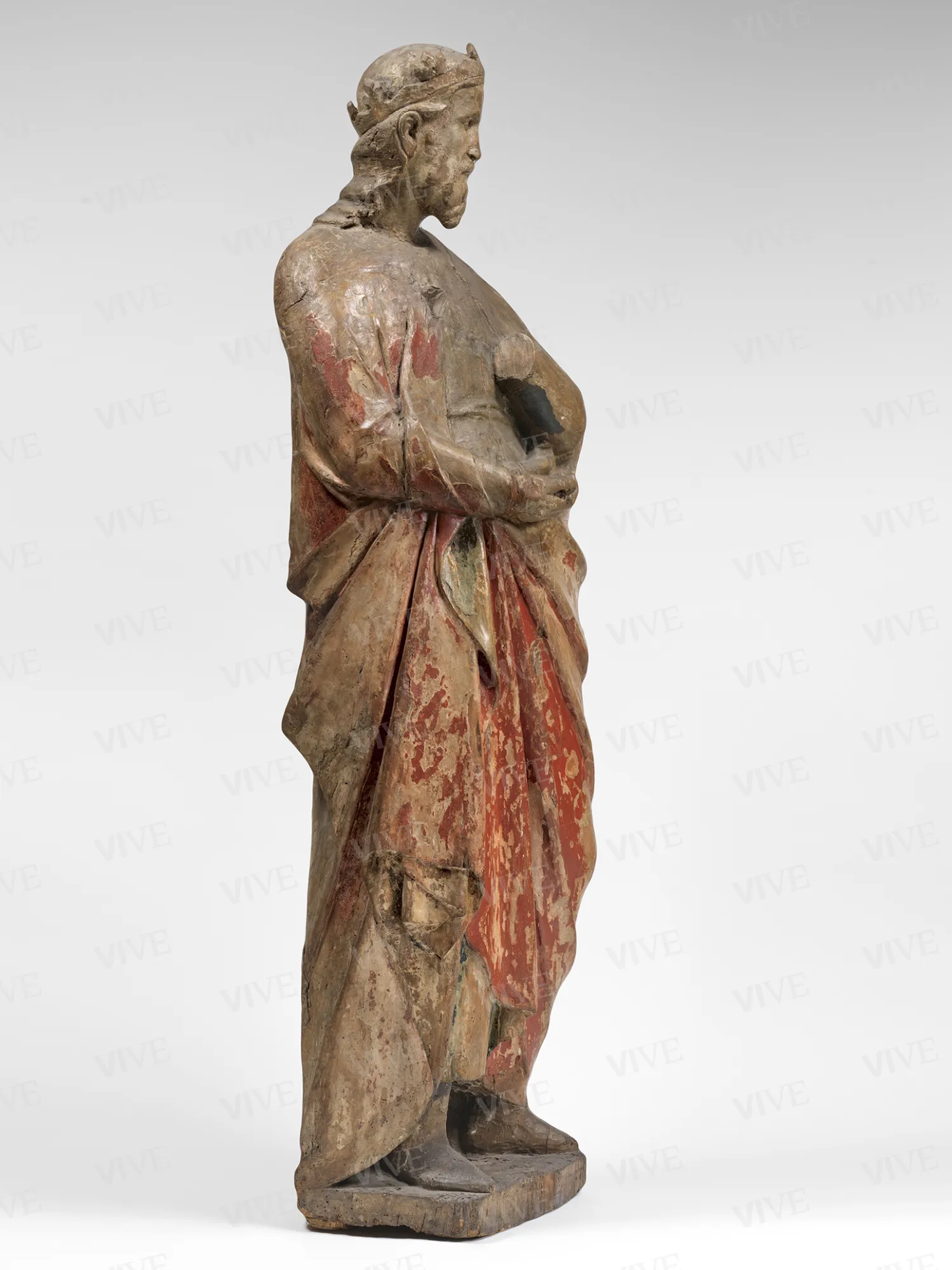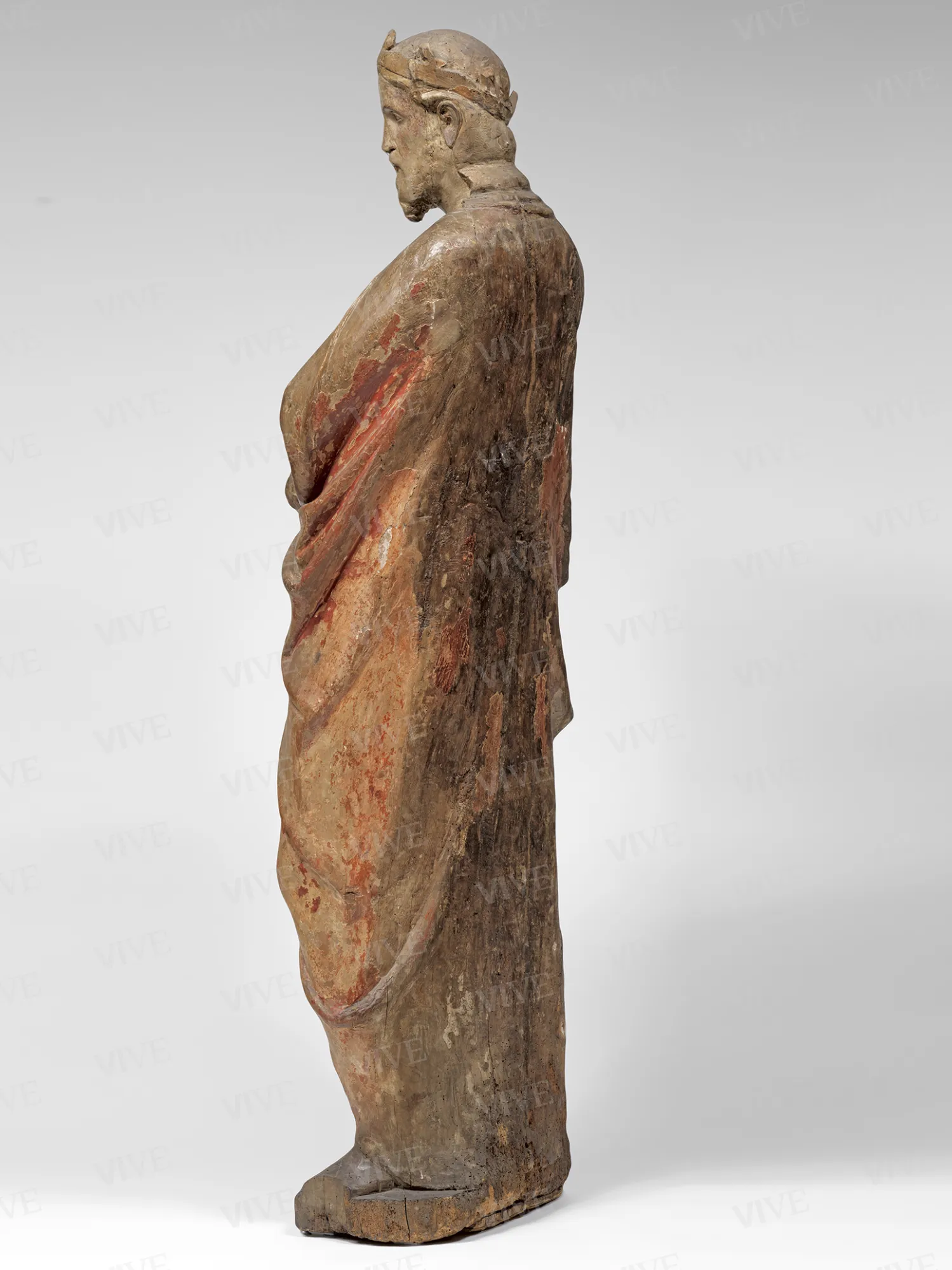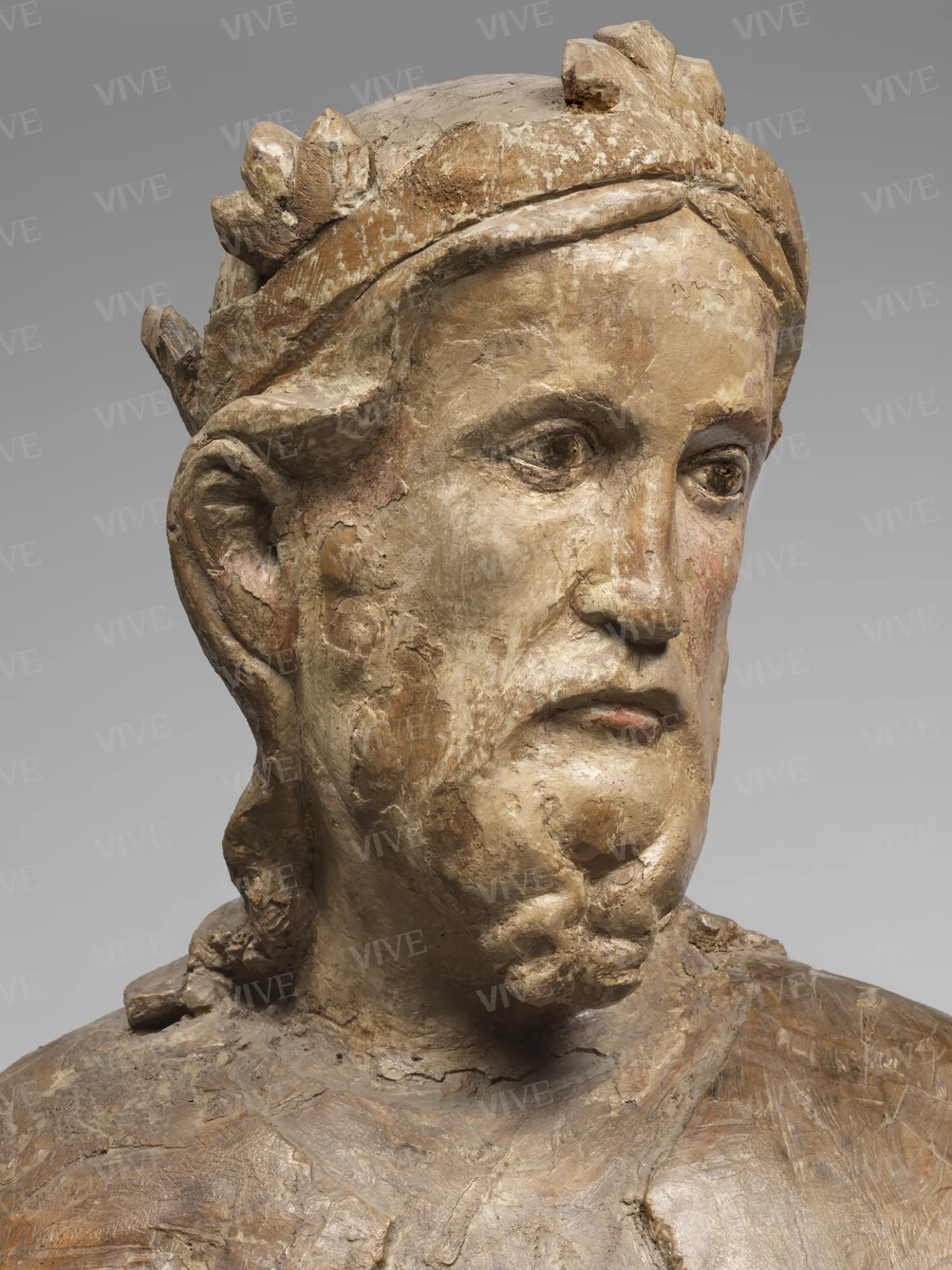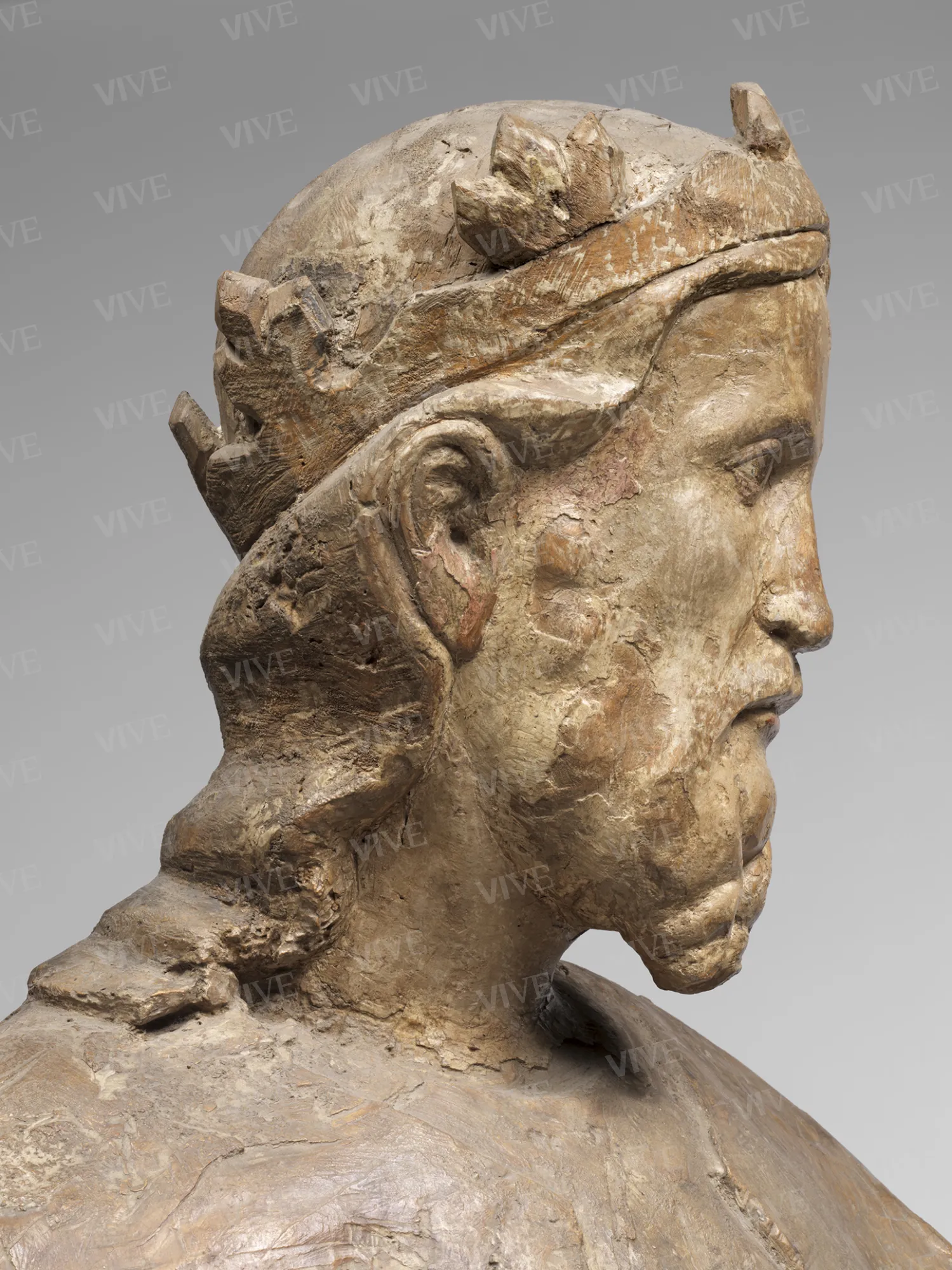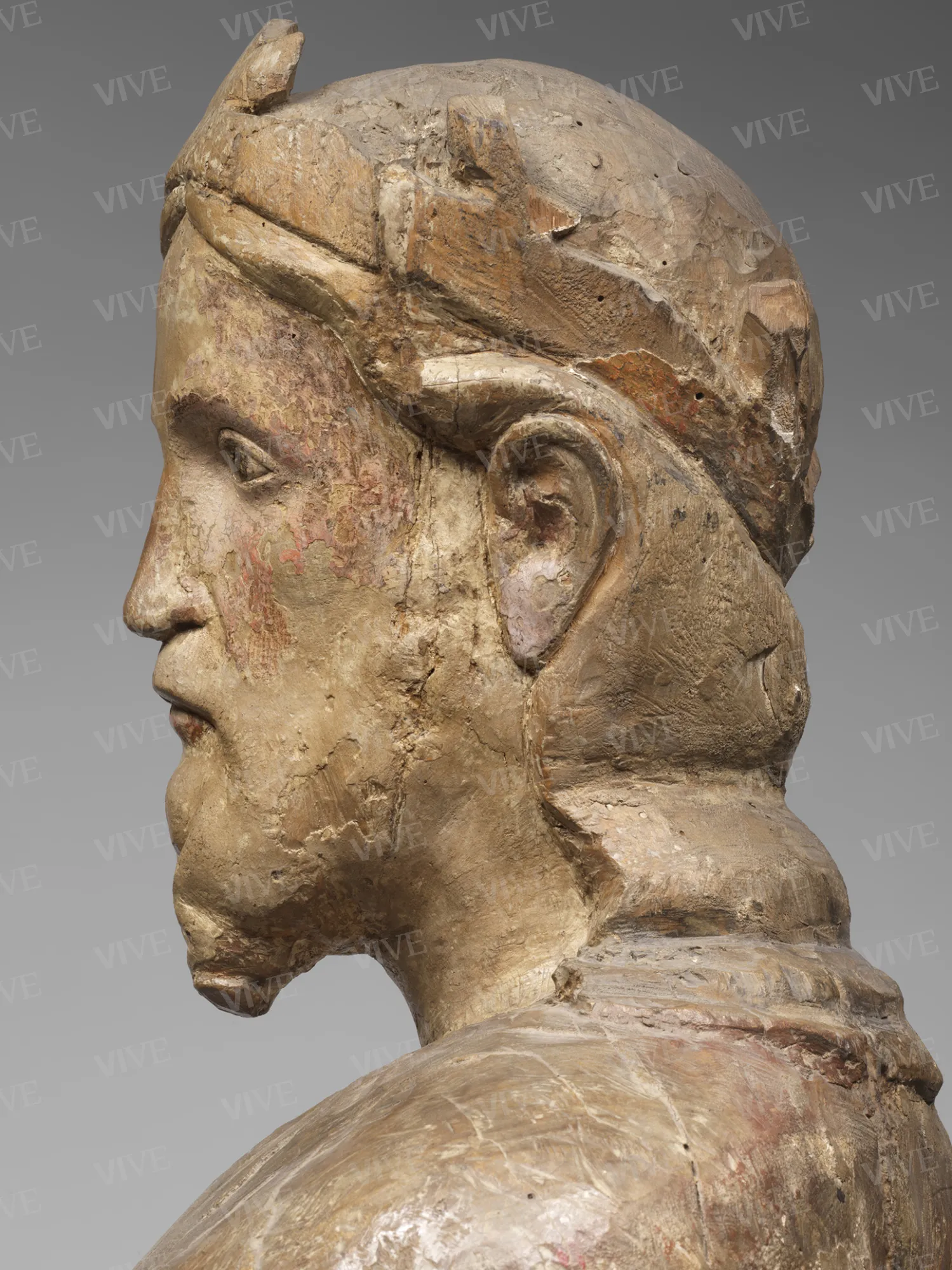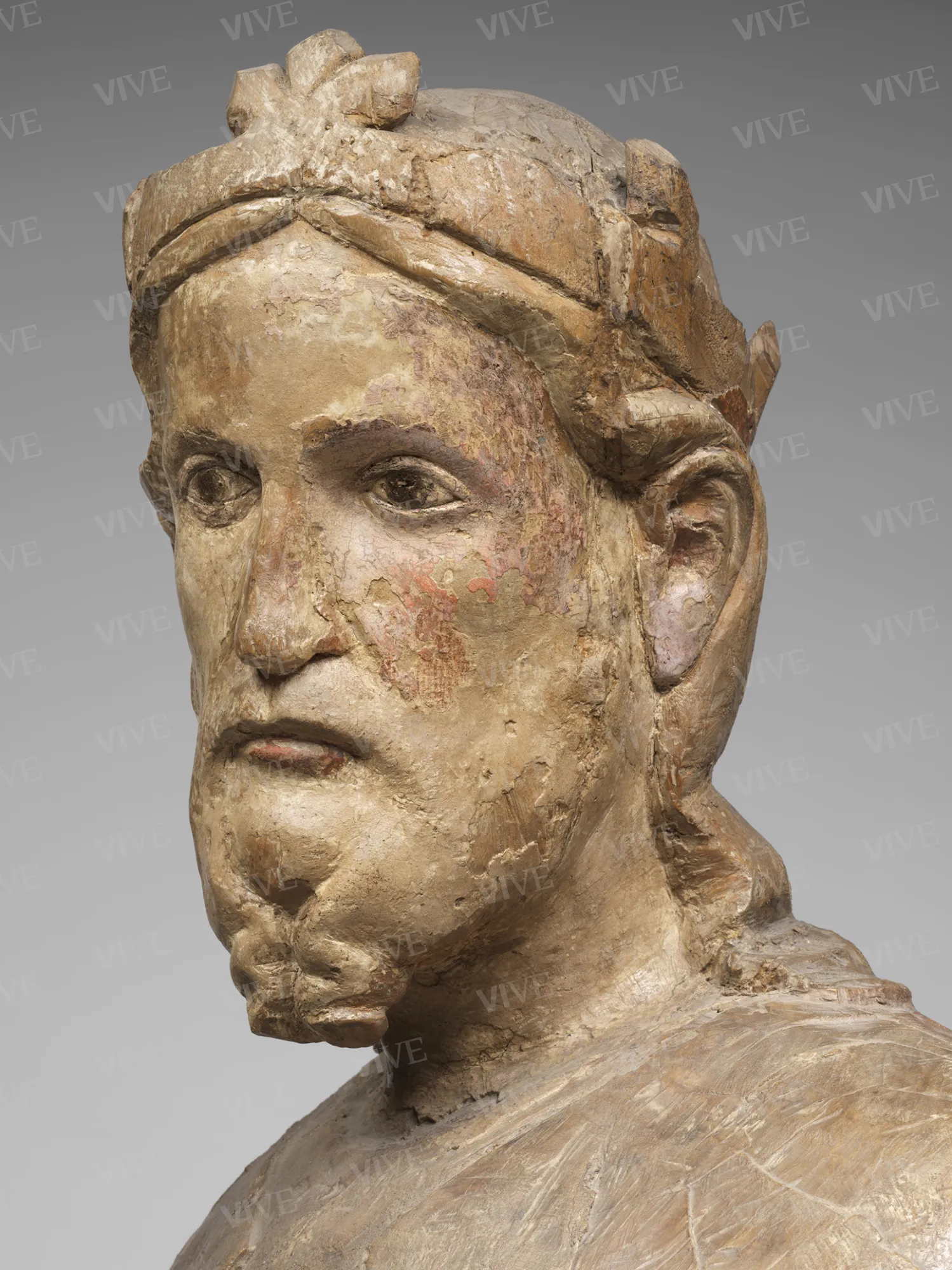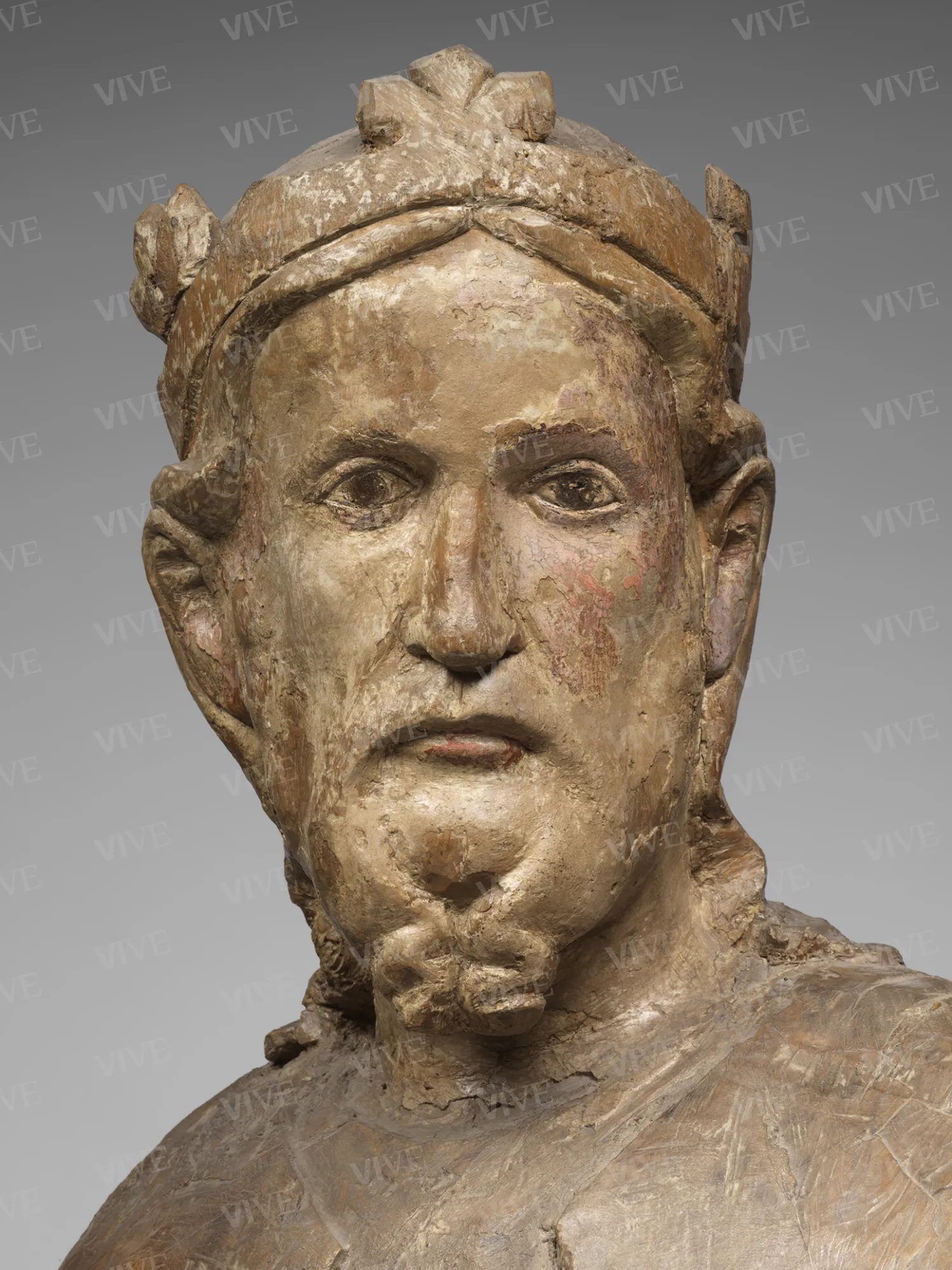Two Magi
Master of the Fabriano Magi 1360s
The sculpture (a), life-size, is worked in the round using a single block of wood (poplar). The figure, identifiable as the Magus Caspar, is standing and rests on an irregularly shaped base; he is wrapped in a softly draped blue cloak adorned with phytomorphic motifs and holds an incense jar, which, like the statue’s nose, is partially lost. He is wearing a crown and his torso is slightly outstretched toward the viewer's left, just as his head is facing the same direction. The cloak falls over the Magus’s back in deep, triangular-shaped folds.
The sculpture (b), life-size, is worked in the round using a single block of poplar wood and stands on an irregularly shaped base. The figure, identifiable as the Magus Balthazar, has a face with a thick beard styled in two curls. The crowned head is slightly turned downward. The facial expression is intense and pensive. The figure is wrapped in a cinnabar-red cloak with traces of gilding, which softly drapes over his back with straight folds. Parts of the arms that bear the Magus’s gift for the Redeemer are missing.
The sculpture (a), life-size, is worked in the round using a single block of wood (poplar). The figure, identifiable as the Magus Caspar, is standing and rests on an irregularly shaped base; he is wrapped in a softly draped blue cloak adorned with phytomorphic motifs and holds an incense jar, which, like the statue’s nose, is partially lost. He is wearing a crown and his torso is slightly outstretched toward the viewer's left, just as his head is facing the same direction. The cloak falls over the Magus’s back in deep, triangular-shaped folds.
The sculpture (b), life-size, is worked in the round using a single block of poplar wood and stands on an irregularly shaped base. The figure, identifiable as the Magus Balthazar, has a face with a thick beard styled in two curls. The crowned head is slightly turned downward. The facial expression is intense and pensive. The figure is wrapped in a cinnabar-red cloak with traces of gilding, which softly drapes over his back with straight folds. Parts of the arms that bear the Magus’s gift for the Redeemer are missing.
Details of work
(b) height 178 cm; width 65 cm.
Catalog entry
The two sculptures were deposited in Palazzo Venezia in 1976, and came from the Galleria Nazionale d'Arte Antica in Palazzo Barberini where they had converged after the suppression of the Museo Artistico-Industriale in Rome (they were listed by Ferrari [1906, 30, no. 5] in this latter museum). Critics unanimously attribute these to the Master of the Magi of Fabriano, a conventional name given to the author of the group of the Adoration of the Magi preserved in the Pinacoteca Comunale Bruno Molajoli in Fabriano (Neri Lusanna 1992; Neri Lusanna 2002; Fachechi 2011; Delpriori 2017; Delpriori 2022, 102–105) and from the church of Santa Maria della Misericordia in the same city. The statues from Palazzo Venezia must also have been part of a group of the same subject. A Madonna and Child from a private Florentine collection has been associated with the two sculptures as being part of the group (Neri Lusanna 1992; Neri Lusanna 2002). The Master of the Magi of Fabriano is one of the greatest interpreters of Marches sculpture in the second half of the fourteenth century and shares elements with the painting of Allegretto Nuzi.
The identification of the Master of the Magi of Fabriano as Fra' Giovanni di Bartolomeo, a "lignamine" master active in Fabriano in the second half of the fourteenth century, has never been particularly popular (Donnini 2014, 87–91).
Stefania Paone
Entry published on 12 February 2025
State of conservation
(a) Good, with some loss (tip of nose, incense jar) and paint film.
(b) Good, with some loss (parts of arms) and paint film.
Restorations and analyses
Analysis of the wood species (poplar) performed by IVALSA-CNR in Florence, Italy;
pigment analysis performed by ICVBC-CNR in Florence.
Provenance
Rome, Museo Artistico-Industriale di Roma;
Rome, Galleria Nazionale d'Arte Antica di Palazzo Barberini.
Exhibition history
Fabriano, Pinacoteca Civica "Bruno Molajoli", Da Giotto a Gentile. Pittura e scultura a Fabriano tra Due e Trecento, July 26–November 30 2014.
References
Ferrari Giulio (a cura di), Museo Artistico-Industriale di Roma. Catalogo delle Collezioni, Roma 1906, p. 30, n. 5;
Neri Losanna Enrica, Invenzione e replica nella scultura del Trecento: il Maestro dei Magi di Fabriano, in «Studi di Storia dell’Arte», 3, 1992, pp. 1-9;
Neri Lusanna Enrica, Per l'Adorazione dei Magi di Palazzo Venezia a Roma, in Klein Bruno, Wolter-von dem Knesebeck Harald, (a cura di), "Nobilis arte manus. Festschrift zum 70. Geburtstag von Antje Middeldorf Kosegarten", Dresden 2002, pp. 218-227;
Kreytenberg Gert, Master of the Magi of Fabriano, in Butterfield Andrew (a cura di), Italian Renaissance Sculpture, catalogo della mostra (New York, Salander-O’Reilly Galleries, 3 novembre 2004-8 gennaio 2005), New York 2004, pp. 6-12;
Fachechi, in Russo Laura (a cura di), Il Natale. Opere delle Gallerie del Polo Museale Romano, catalogo della mostra, (Roma, Museo Nazionale del Palazzo Venezia, Sala Altoviti, 23 dicembre 2008-11 gennaio 2009), Roma 2008, n. 7;
Fachechi Grazia Maria, Museo Nazionale del Palazzo di Venezia. Sculture in legno, Roma 2011, pp. 79-80;
Donnini Giampiero, Fra’ Giovanni di Bartolomeo. Maestro “de lignamine laborato ee depicto”, in Sgarbi Vittorio, Donnini Giampiero, Papetti Stefano (a cura di), Da Giotto a Gentile. Pittura e scultura a Fabriano tra Due e Trecento, catalogo della mostra (Fabriano, Pinacoteca Civica Bruno Molajoli (26 luglio-30 novembre 2014), Firenze 2014, pp. 87-91;
Draghi Andreina, in Sgarbi Vittorio, Donnini Giampiero, Papetti Stefano (a cura di), Da Giotto a Gentile. Pittura e scultura a Fabriano tra Due e Trecento, catalogo della mostra (Fabriano, Pinacoteca Civica Bruno Molajoli, 26 luglio-30 novembre 2014), Firenze 2014, n. 64;
Campigli Marco, Vittorio Cini e la scultura, in Bacchi Andrea, De Marchi Andrea, La Galleria di Palazzo Cini. Dipinti, sculture, oggetti d'arte, Venezia 2016, pp. 371-387;
Delpriori Alessandro, Allegretto Nuzi e la scultura. Il Maestro dei Magi di Fabriano, in Biondi Lucia, De Marchi Andrea (a cura di), Elogio del Trecento fabrianese. Materiali per Allegretto Nuzi e dintorni, Firenze 2017, pp. 101-116;
Delpriori Alessandro, La scultura gotica a Fabriano: una linea fino ad Allegretto e oltre, in De Marchi Andrea, Mazzalupi Matteo (a cura di), Allegretto Nuzi e il ’300 a Fabriano, catalogo della mostra (Fabriano, Pinacoteca Civica Bruno Molajoli, 14 ottobre 2021-30 gennaio 2022), Cinisello Balsamo 2021.


